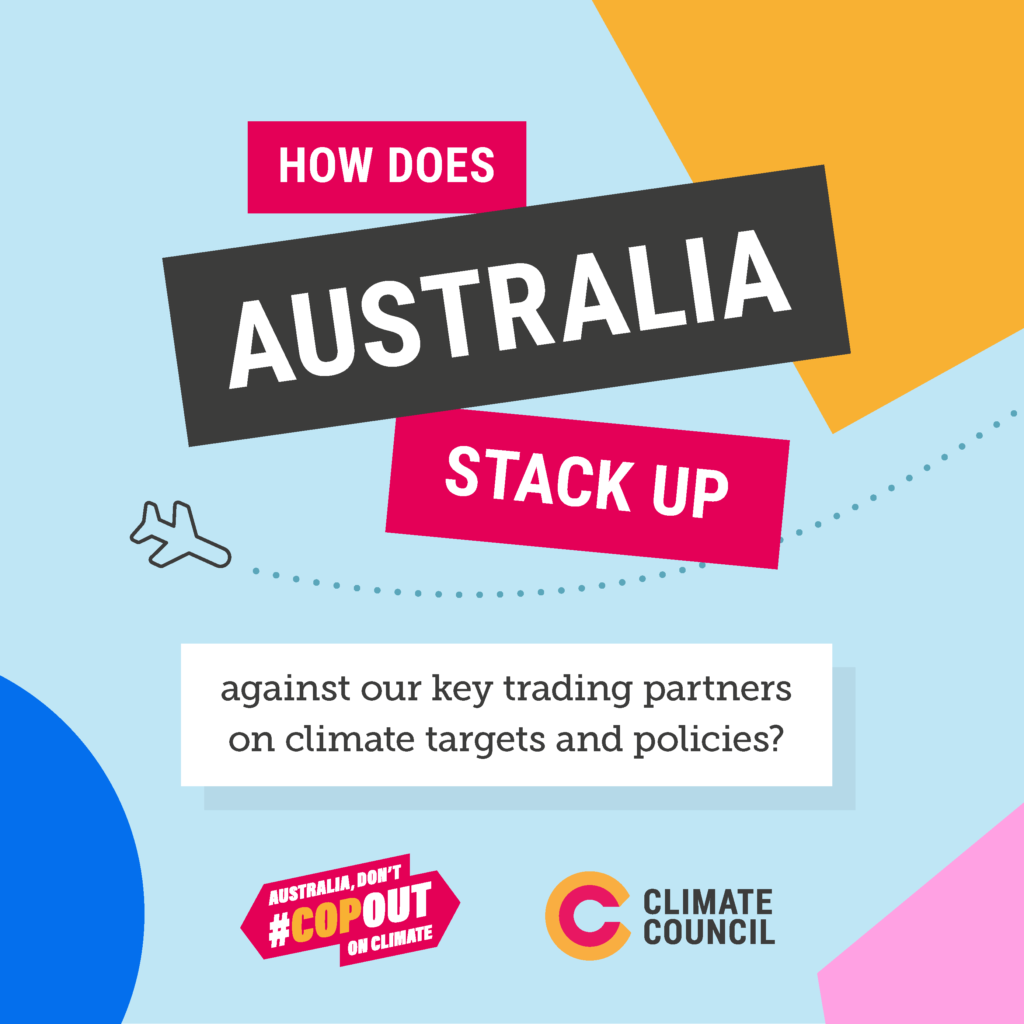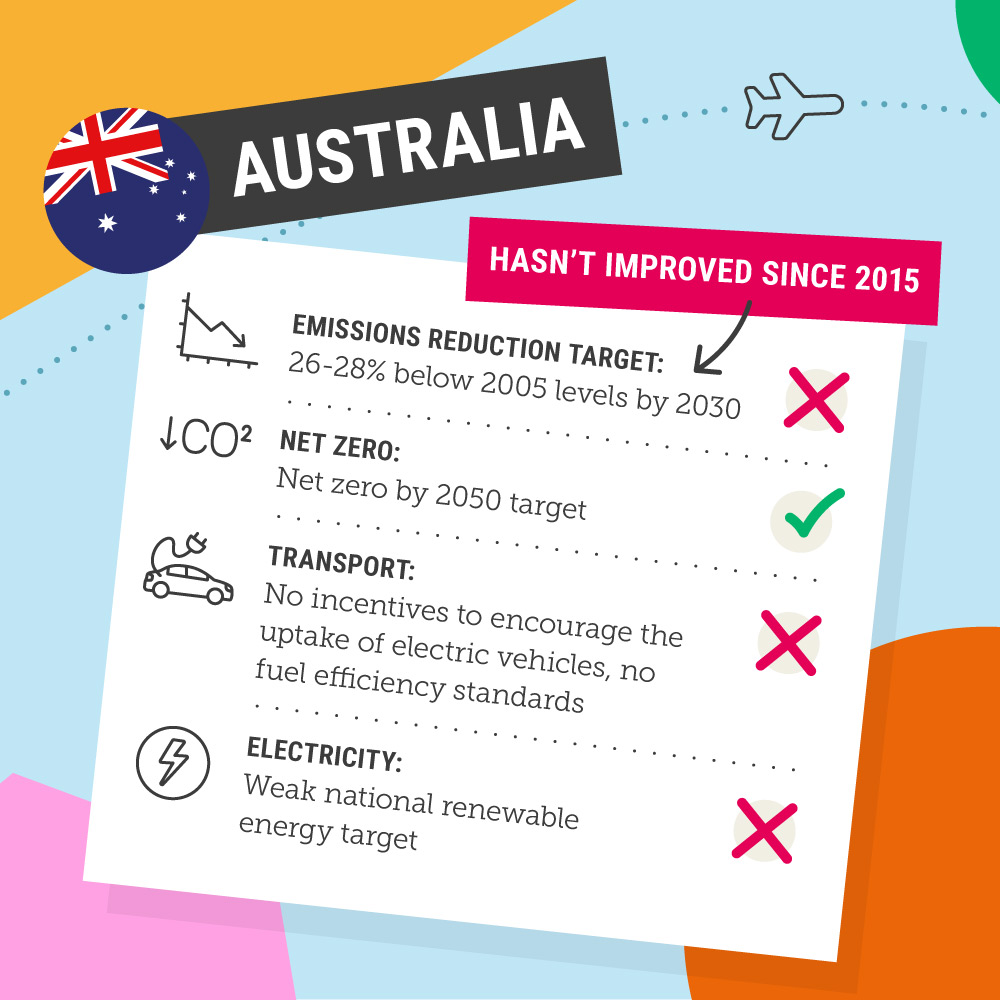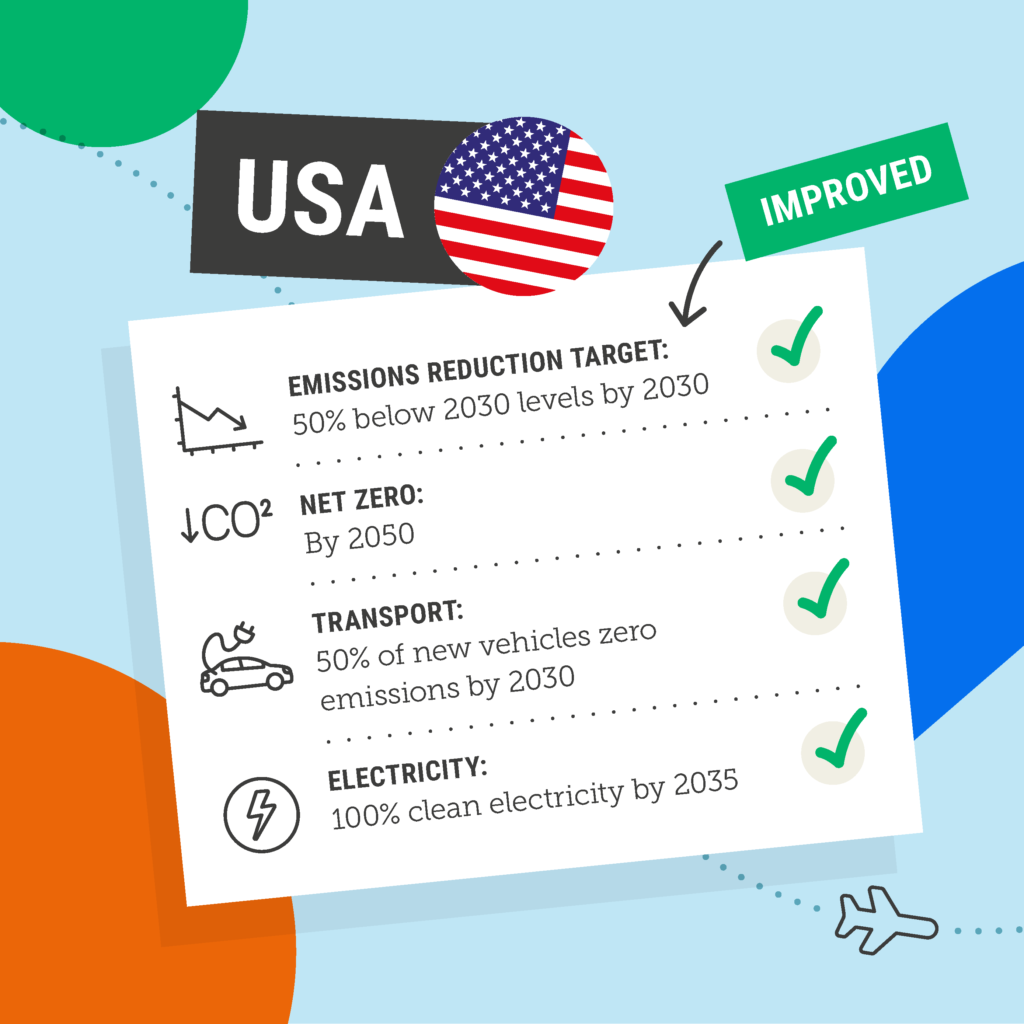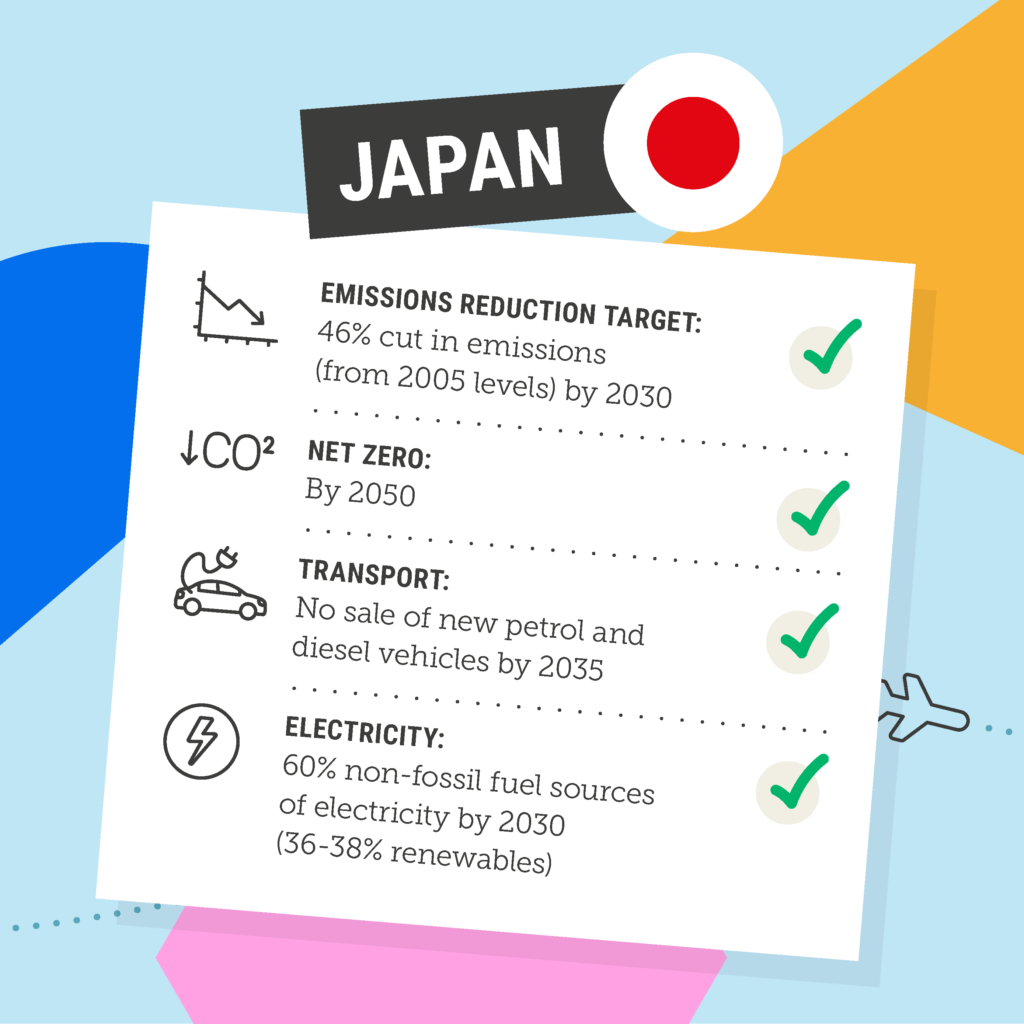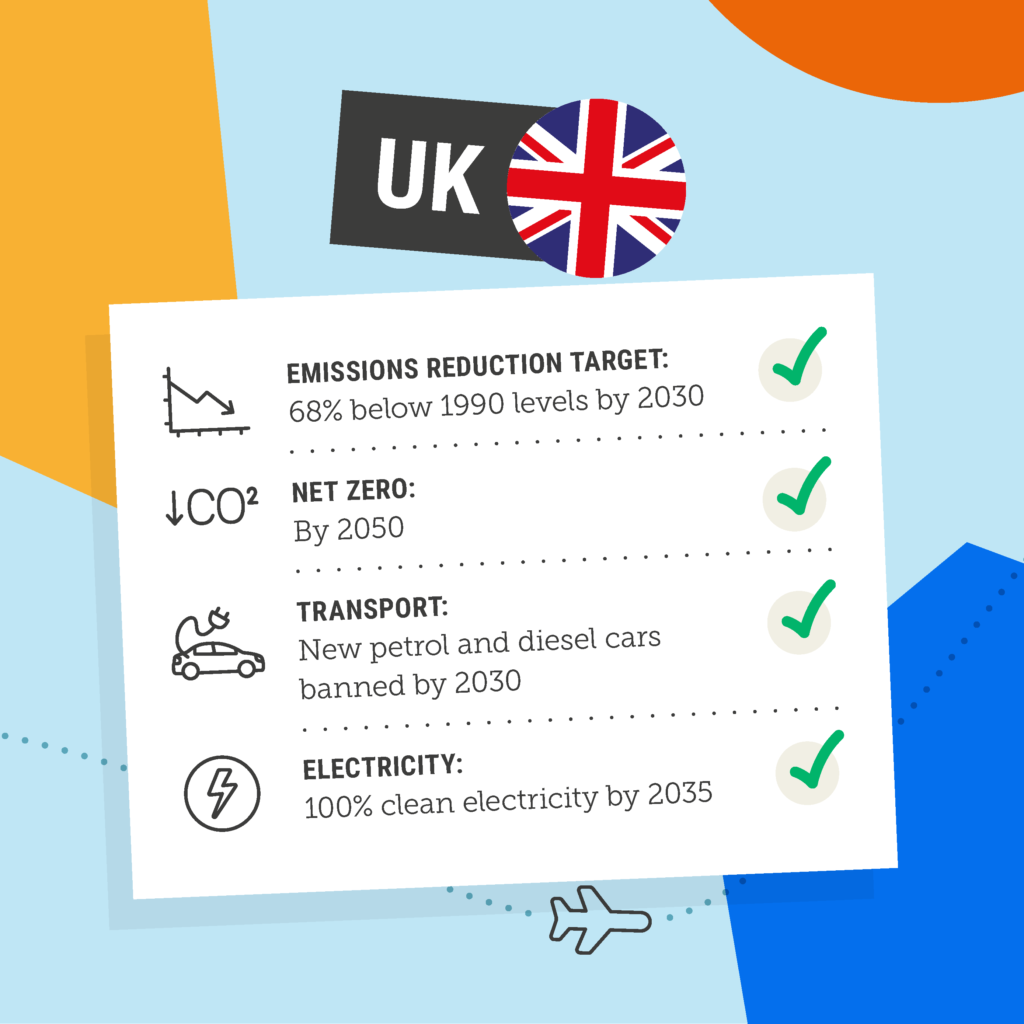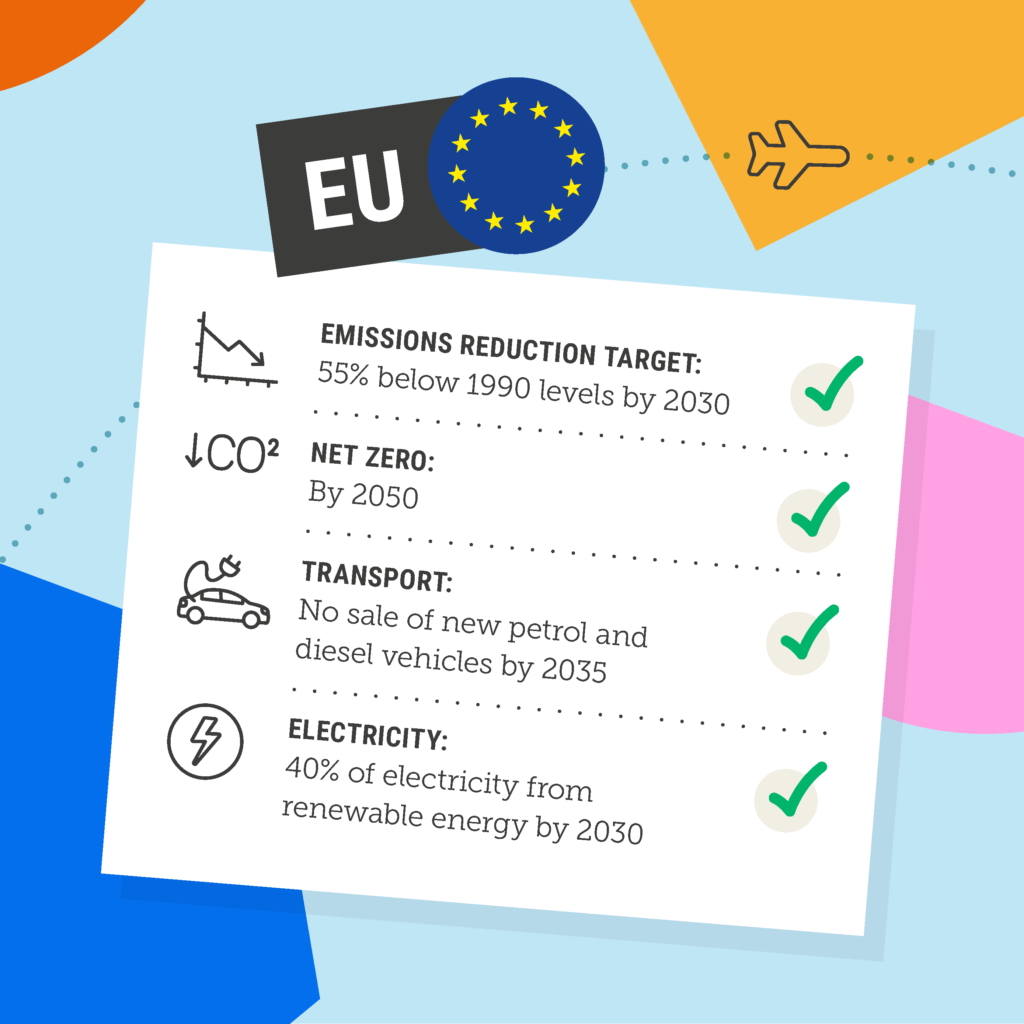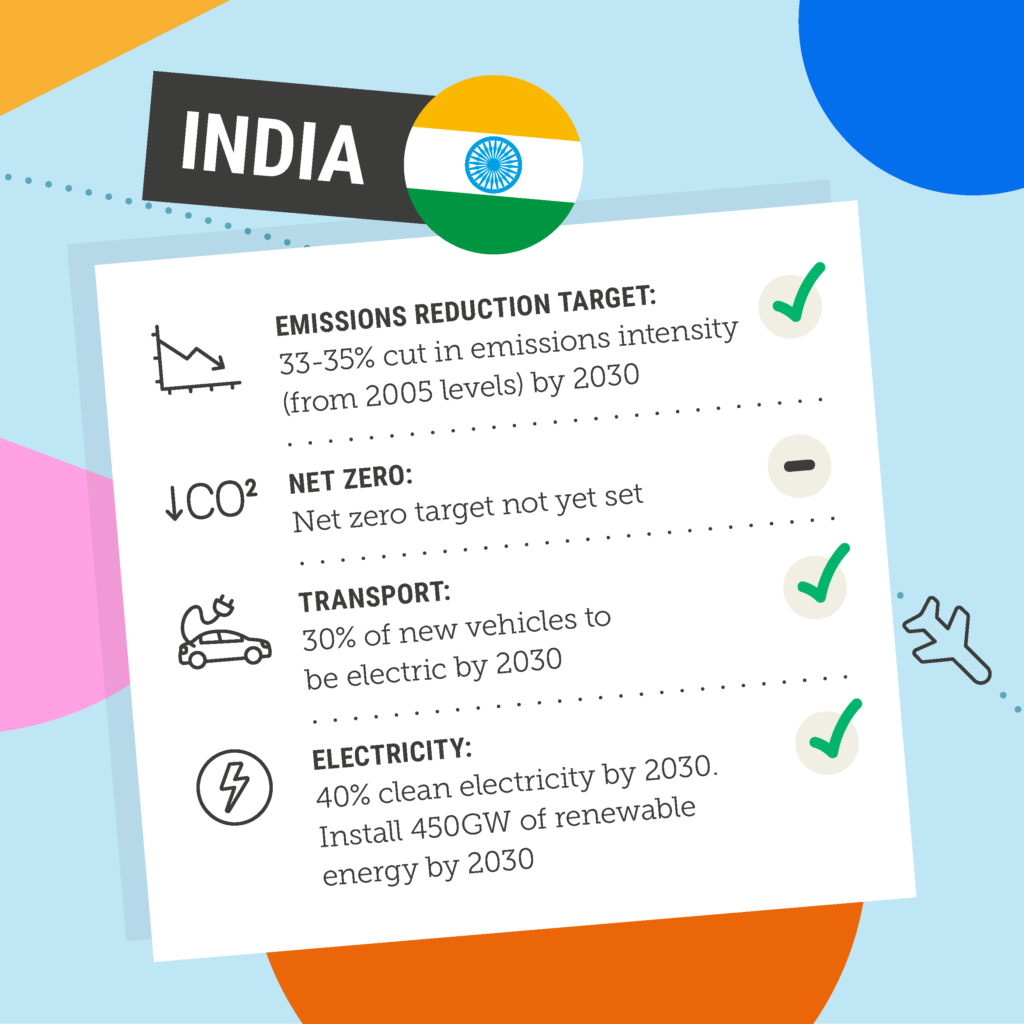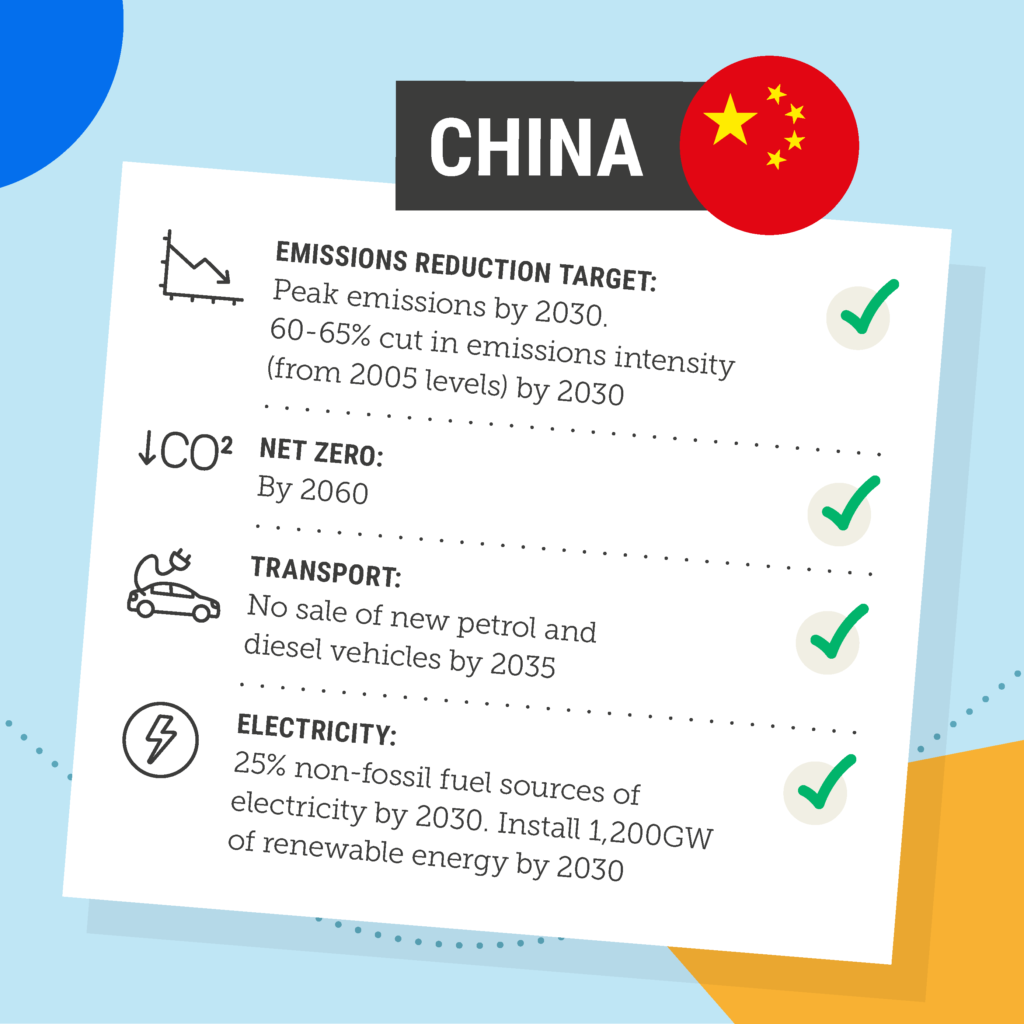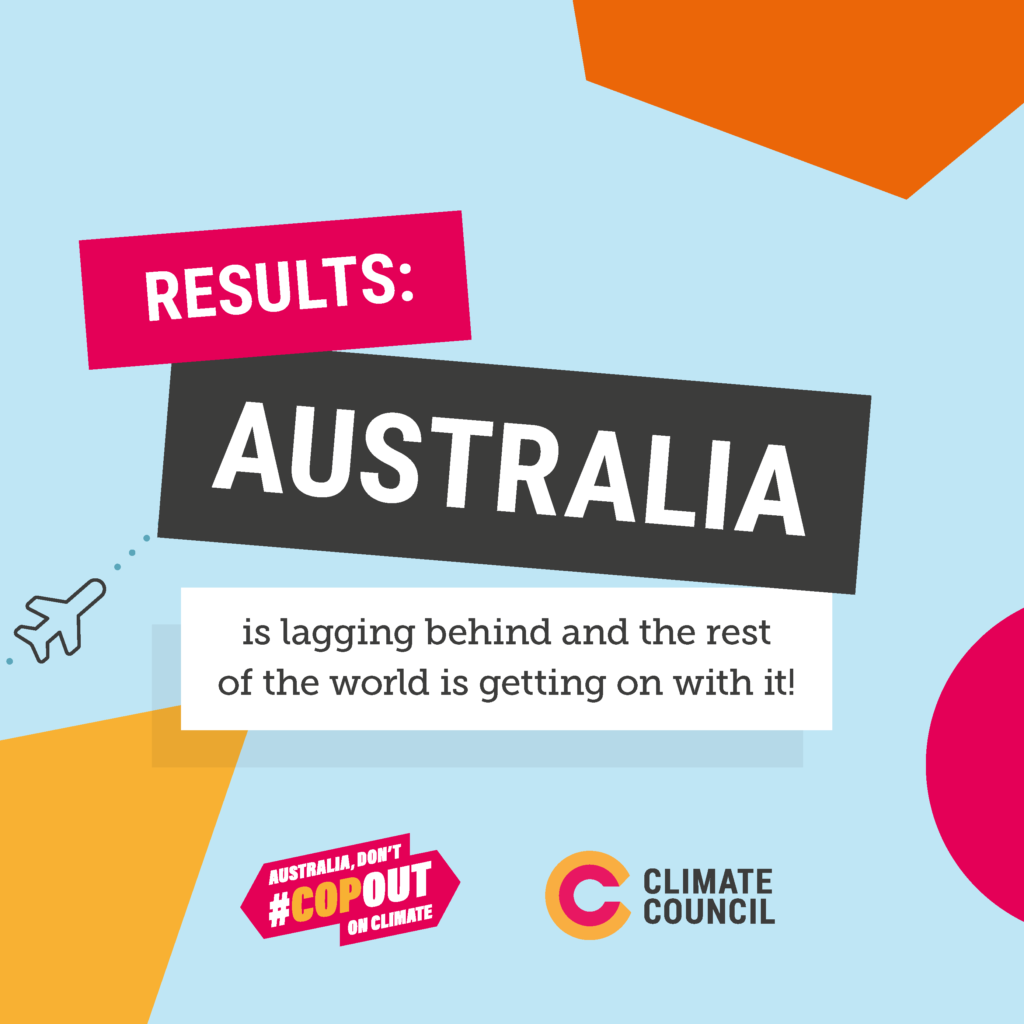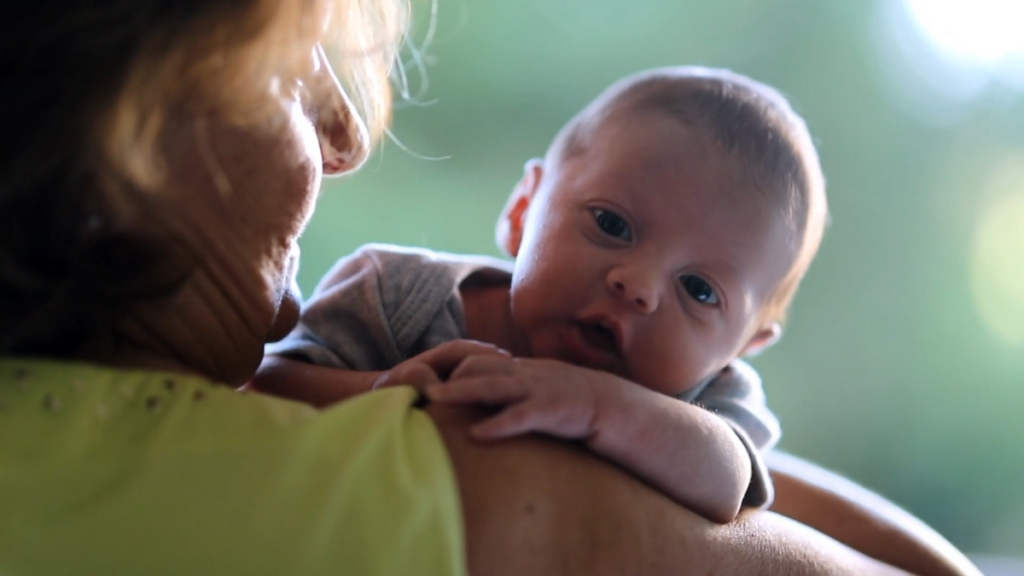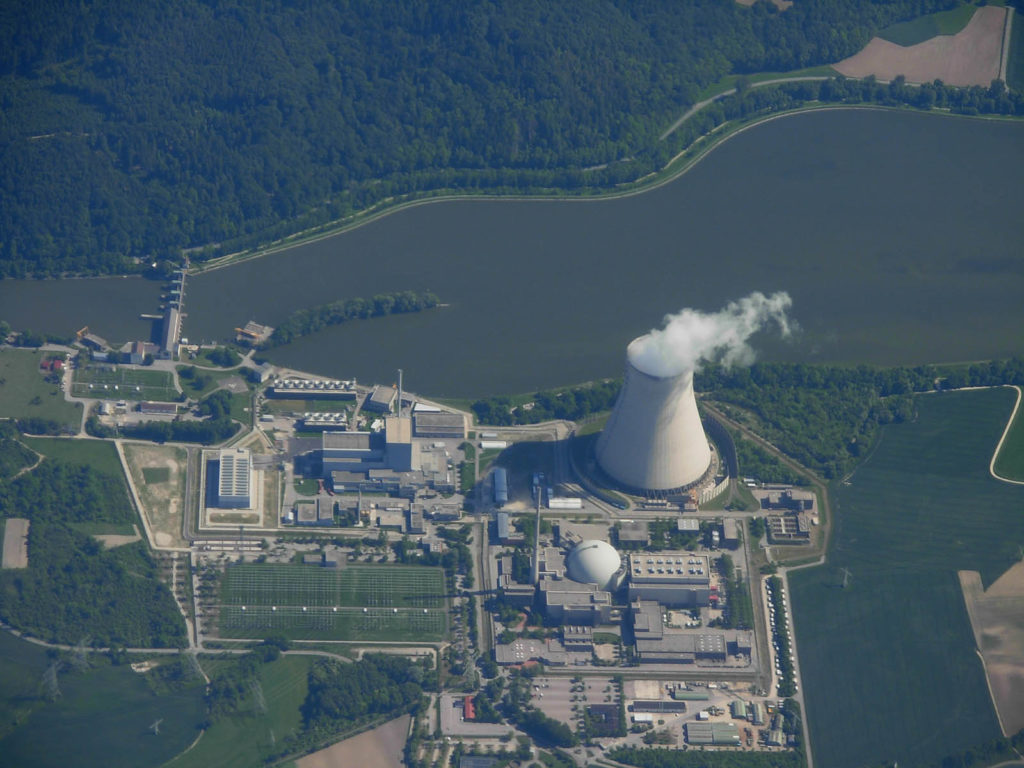COP26 has been described as the most important international climate summit in years. During the first two weeks of November in Glasgow, deals will be made, policies could fly thick and fast, and negotiations could continue well into the night.
We’ve got eyes and ears on the ground and will be bringing you everything you need to know about this critical event. So strap in, put on some bagpipe music, and stay up to date with our running blog.
13 November – Day 12
So that’s a wrap! Moments ago nearly 200 countries adopted the Glasgow Climate Pact.We’ll have a more complete analysis of this final outcome from COP26 in the coming days. In the meantime, here’s some of the main things you need to know:
- The final decision places enormous pressure on Australia to step up its efforts during the critical years ahead. It requests all countries to review and strengthen their 2030 targets in 2022, recognising the global emissions must fall by 45% by 2030 in order to keep alive the goal of limiting warming to 1.5°C – a matter of survival for many vulnerable communities. More particularly, it urges that the minority of countries, including Australia, that didn’t come to Glasgow with a stronger target to do so as soon as possible next year. For the first time in a COP decision, there is an explicit call for the phase-out of coal-fired power and fossil fuel subsidies.
- As ever, no country got everything they wanted. In addition to fighting to “keep 1.5°C alive”, the world’s most vulnerable countries, including Pacific Island Countries, fought to the end to secure greater assurances of funding to address loss and damage from climate change. On this front, the outcome has fallen short of what we hoped, and what justice for frontline communities demands. Nonetheless, in the spirit of compromise and determined that they not leave Glasgow with no deal at all, Pacific Island Countries including Tuvalu, Marshall Islands and Fiji gave some of the most impassioned calls for countries to adopt the final deal that had been put on the table.
- While the final outcome still leaves the world with a massive amount of work to do, COP26 has seen some real progress. Countries that in past years fought tooth-and-nail against stronger action stepped up with new commitments. Many joined the new partnerships and alliances struck in the first week, including new global pledge to reduce emissions of methane – a highly potent greenhouse gas – as well as deals on coal phase-out, deforestation, climate finance and more. Australia has never been more isolated internationally, or faced greater pressure to step up.
You can read more reflections from Chief Councillor Tim Flannery and Head of Research Simon Bradshaw on what’s gone down over these rollercoaster two weeks in their closing articles in the Sydney Morning Herald and The Conversation. As promised, there’ll be more detailed analysis coming your way in the coming days. In the meantime, thank you for joining us on this journey. What happens next, and whether COP26 ultimately succeeds in catalysing a decade of transformative action, is up to all of us!
12 November – Day 11
As we write today, negotiators are locked in tense talks over the final ‘COP decisions’. Expect this to continue through the night (Glasgow time) and for negotiations to spill over well into the weekend.
On the plus side, the all-important call for those countries who’d failed to come to Glasgow with a stronger 2030 target to come back in 2022 having stepped things up, has survived in the latest draft of the decision, despite efforts by Australia and a small band of other laggards to have this deleted.
On the down side, the call for an accelerated phase-out of coal power has been weakened through the addition of the word ‘unabated’ in front of coal. This leaves the door open for Australia’s favourite tech fantasy – carbon capture and storage, which as we’ve well established by this stage is little more than a licence to keep polluting.
Other battles are still raging, particularly over the provision of funding to address permanent loss and damage from climate change. When the COP will wrap is anyone’s guess, but we expect to be here for some time yet.
But while there are many details to be worked out – some of them of considerable consequence – the message to Australia from COP26 in Glasgow has been unequivocal: come back in 2022 with a much stronger target for 2030 and a plan to move beyond coal and gas.
Australia arrived in Glasgow as the worst-performing of all developed countries on reducing emissions and moving beyond fossil fuels. The Government has done nothing here to change that. Meanwhile, other countries have picked up the pace and left us even further behind. The sooner the Australian Government steps up with a plan to drive down emissions this decade, the sooner we can start unlocking Australia’s enviable opportunities for new jobs and prosperity through renewable energy and clean industries, start repairing our international reputation and start protecting Australians and communities everywhere from the ravages of climate change.
As we await the final outcomes, in today’s video we give a quick recap of what we’ve seen over the last couple of weeks and what to expect in the final hours.
11 November – Day 10
While you might feel frustrated at the lack of climate leadership and action at a Federal level in Australia, you can take comfort in the fact that – across Australia and around the world – cities and councils are leading the way.
Today we got to showcase some of that ourselves, with Dr Simon Bradshaw representing the Climate Council’s Cities Power Partnership (CPP) at a special UK-led event at COP26 on how networks of local governments around the world are helping drive action from the bottom up.
The CPP is Australia’s largest network of local councils leading the way to a thriving, zero emissions future. It’s made up of 164 councils from across the country, representing almost 65% of the Australian population.
So far, there have been about 750 actions taken across CPP members, from putting solar on council facilities to developing local active transport initiatives. Councils also play an important advocacy role. For example, during the Black Summer bushfires many of the CPP councils used their voices to draw attention to how climate change is fuelling more dangerous bushfires in Australia, and why it’s so important that Australia work harder to drive down its emissions and move beyond coal and gas.
And here in the UK there’s the UK100, a collection of British local governments that are advocating for stronger climate action and, in many ways, taking things into their own hands. Dr Simon Bradshaw, Climate Council Head of Research, who is on the ground in Glasgow, was invited to speak at a panel at COP26 supported by UK100, “Local leaders change the national Net Zero conversation.”
10 November – Day Nine
Beep, beep it’s transport day at COP26! For many countries, transport makes up a substantial chunk of greenhouse gas emissions, which means having a plan to reduce those is key to tackling climate change. Luckily for Glasgow, Scotland is racing ahead on renewable transport!
GLASGOW’S RACING TOWARDS A CLEAN TRANSPORT SYSTEM
Glasgow is getting a £59 million fleet of new electric buses on the roads by March 2023, and will also see a bus depot on the south side of the city converted into one of the UK’s largest electric vehicle charging hubs. Further north in Aberdeen, a fleet of double-decker hydrogen buses is taking the city by storm as part of a €32m EU-funded Jive (joint initiative for hydrogen vehicles across Europe) project, which is deploying 139 zero emission buses and refuelling stations across five countries.
Scotland is also building out its electric vehicle infrastructure too; in 2020 Scotland had 1,592 public EV charge points. Edinburgh actually has one of the highest concentrations of EVs in the UK. Plus, the Scottish government offers interest-free loans to help people purchase their own EVs.
EVS IN AUS
The Australian Government has also just made an announcement about electric vehicle strategies back home in Aus, but it has been widely criticised for being a missed opportunity. With the majority of the extra $178 million of funding directed towards charging stations and associated infrastructure, the strategy ignores the most efficient and important measures to improve electric vehicle uptake – fuel efficiency standards, subsidies, tax incentives and sales targets. Fuel efficiency standards are considered a bare minimum of any efficient strategy. It’s a disappointing outcome, and while it’s ‘better than nothing’, it doesn’t go nearly far enough.
OTHER COP NEWS
Overnight, we received the first draft of the final decisions from COP26. While these are only drafts, they give a good initial indication of where things are likely to land. Most importantly, countries (including Australia) that did not come to Glasgow with a new and stronger 2030 target are urged to do so as soon as possible and in advance of COP27 in November 2022. What’s more, the decision calls explicitly for the phase-out of coal and the phase-out of fossil fuel subsidies, which is the first time this has appeared in any decision text. This is a big deal for Australia.
9 November – Day Eight
WOMEN AND THE CLIMATE
What are the impacts of climate change on women? The eighth day at COP aimed to tackle this question, and also highlight how women around the world are leading on climate action and advocating for communities.
We know climate change is a magnifier – it worsens already existing oppression and marginalisation. And over 80% of displaced people from climate related disasters and changes around the world are women and girls.
In developing countries, women generally are at the forefront of work such as gathering water for cooking and cleaning, and foraging for food, leaving them exposed to changes in the climate. While environmental degradation has serious consequences for all human beings, women’s health is most fragile during pregnancy and motherhood, and puts them at disproportionate risk.
As a wealthy country, it’s important that Australia acknowledges this and commits to fixing the problem through resources and funding. The recognition of what women already, and could potentially, contribute to limit climate change is still lacking. Gender inequality across the globe will only increase the negative effects of unsustainable and destructive environmental management on women and girls.
WOMEN LEADING CLIMATE ACTION
On the flip side of the coin, women – particularly First Nations women and Indigenous women – are also leading the world’s climate action, demanding more from our world leaders and fighting to protect their communities.
At COP26, we spoke to Kulkalaig woman, Seed Campaigns Director and Our Islands Our Home community organiser Tishiko King, who is from the Island of Masig (Kulkalgal Nation of Zenadth Kes) about her experiences at the conference and her thoughts on where Australia is at.
“We are at a really critical and crucial time in our lives right now.” said Tishiko King,
“This global gathering is for our world leaders to put the rights of Indigenous people front and centre,” she added. “Unfortunately, the Australian government is really failing at safeguarding, not only Aboriginal and Torres Strait Islander people, but our brothers and sisters in Aotearoa and in the Pacific region, in the Asian region.”
“We are already seeing our cultural sites, our significant sites being desecrated. This time is our turning point,” added King.
King is one of many Indigenous women having an extremely important role in combating climate change.
“Many of the most effective leaders on climate change around the world are women,” said Climate Council CEO, Amanda McKenzie.
“I think women often bring a different style of leadership which is about bringing people together, listening, less ego and leading from behind,” McKenzie said.
These skills are crucial in a political environment that has often been plagued by entrenched positions and tribalism,” added McKenzie.
8 November – Day Seven
By Dr Simon Bradshaw, Director of Research (Projects)
Ask anyone here in Glasgow what comes to mind when they think of Australia, and the answer is nearly always the same: bushfires. The 2019-20 fires are burned into the memories of not only Australians but millions of people around the world.
Sadly, the two years since our worst ever fire season have seen many other countries and regions, including the US, Canada, Siberia, Turkey and Greece, suffer unprecedented fires fuelled by climate change and the burning of coal, oil and gas.
Today, to coincide with ‘adaptation, loss and damage’ day at COP26, and our full-page message in The Times from the Emergency Leaders for Climate Action, we gathered together a group of bushfire survivors from around the world to share their experiences with the media and to remind leaders just what is at stake if they don’t step up and take stronger action.
Having been to many COPs and watched countless press conferences and other events, I have to say that this was one of the most moving. Too often, what goes on in these halls can feel very far removed from the brute reality and urgency of our climate crisis. Negotiators argue over the minutiae of decision texts and talk in indecipherable climate jargon. Meanwhile other delegates are out perusing a sea of shiny exhibits, networking, or listening to the latest announcement of a new pledge, report or technological innovation.
It is those moments when frontline communities stand up and speak truth to power, cut through the noise, and remind those at COP of the lived realities of climate change, that stay with people and influence the outcomes more than anything else can.
Today our courageous group of bushfire survivors dropped a truth bomb right outside the Australian Pavilion. Hannah Parris, whose parents lost their home in the 2019-20 Australian fires, spoke of how her family heirlooms, which survived fleeing Germany during World War II, were unable to survive the Australian summer. Regina from Sacramento, California, representing the Evangelical Lutheran Church in America (ELCA!) spoke of the solidarity between fire-impacted communities around the world. Tiffany Traverse spoke from the perspective of an Indigenous officer with the British Columbia Wildfire Service. Meneske from Turkey told of the horrific fires experienced by Turkey and other Mediterranean countries in 2021. Jo Dodds, President of Bushfire Survivors for Climate Action, spoke of how it felt to be an Australian bushfire survivor coming to COP26 only to see her government spruiking fossil fuels.
A huge thanks to Climate Council supporters who helped fund the powerful message in The Times. Click on the video to hear some of what Jo, Tiffany, Meneske, Regina and Hannah had to say.
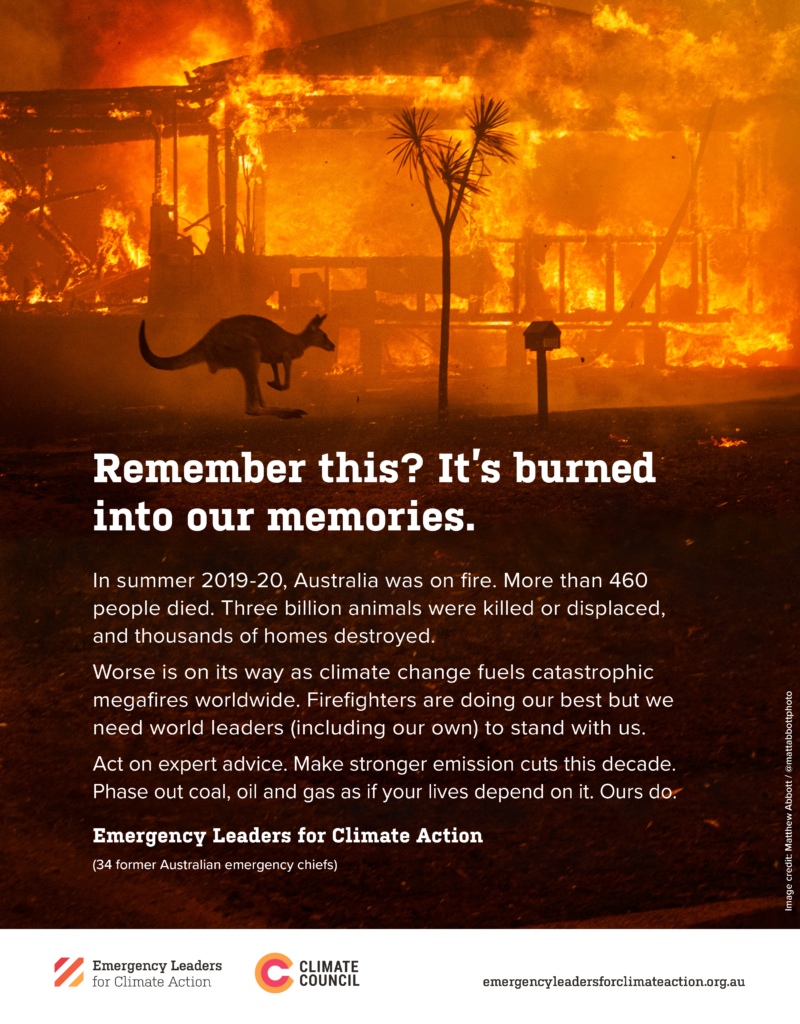
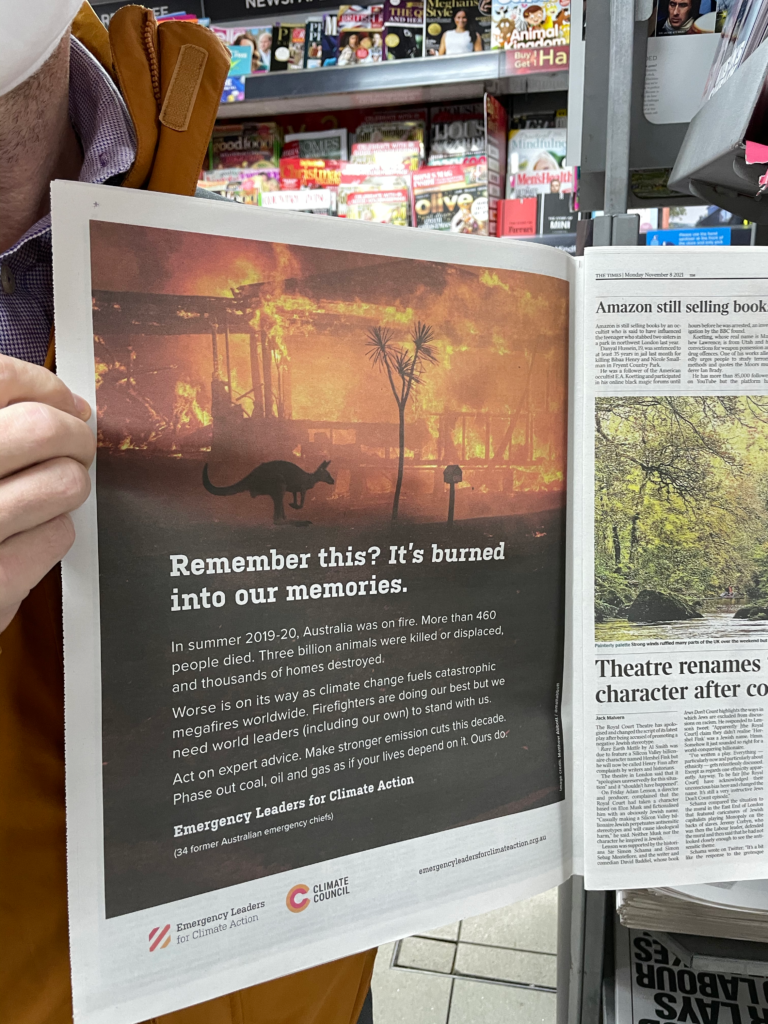

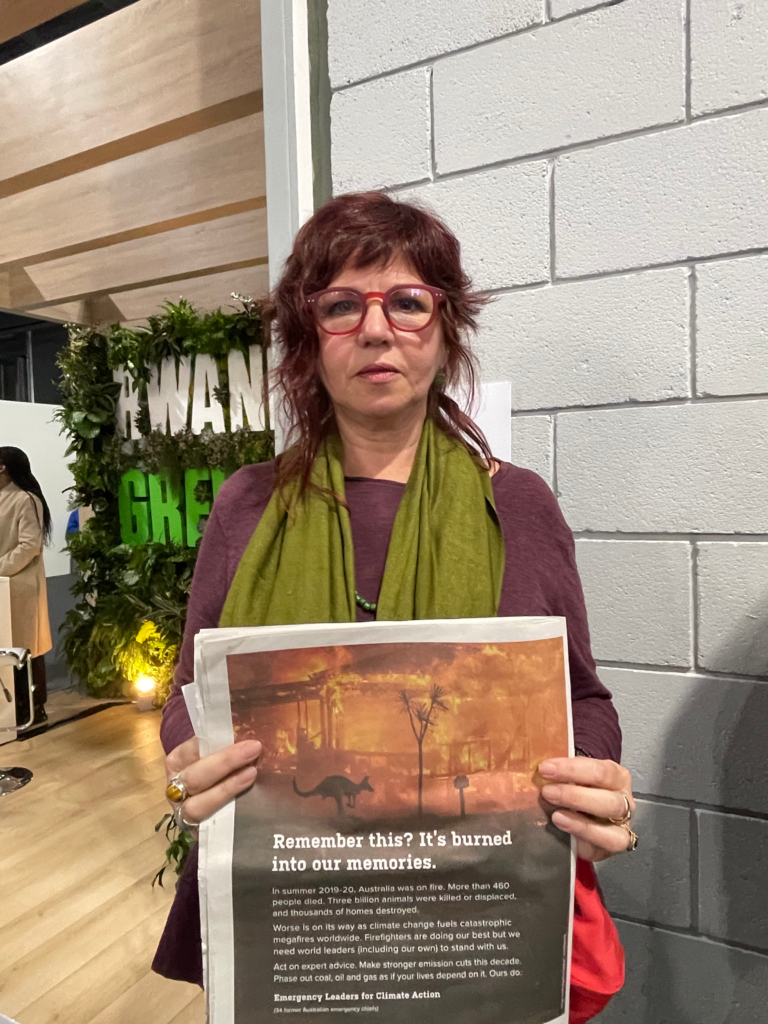
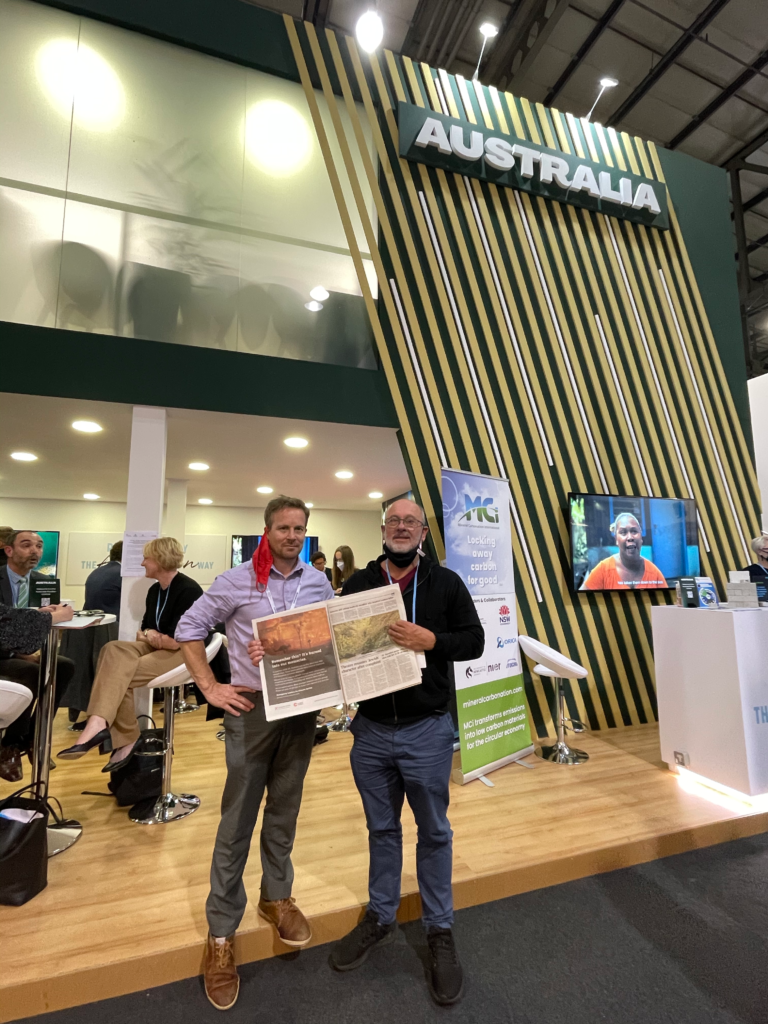
6 November – Day Six
Looking back at week 1
For a summary of week 1, including what major powers brought to the table and how Australia’s actions have been viewed by the rest of the world, see this article by Climate Council researcher Wesley Morgan.
LOOKING AHEAD: WHAT’S HAPPENING INSIDE THE FORMAL NEGOTIATIONS, AND WHAT ISSUES LOOK LIKELY TO DOMINATE WEEK 2?
While coverage of week 1 was dominated by a bonanza of announcements about new deals, including new pledges on deforestation, methane and coal phase-out, at the heart of the COP are the negotiations themselves. These negotiations mostly take place behind closed doors, and cover literally dozens of different aspects of the Paris Agreement and the world’s response to the climate crisis. This includes how countries will mobilise necessary funding, how to ensure transparent reporting on emissions reductions, and how to address permanent loss and damage from climate change.
The negotiations lead to a final set of decisions being adopted by consensus at the end of the second week. Negotiations on some of the less contentious elements are largely wrapped up by the end of week 1. For those that are yet to be resolved, the chairs work to identify the key sticking points and negotiations on these items are then kicked into the second week, where they will be handled by ministers. For this COP, these include:
- Addressing loss and damage from climate change
- Common timeframes for emissions reduction commitments
- Transparency issues
- Finance
- Article 6 of the Paris Agreement, which governs global carbon markets
‘ANNUAL RATCHETS’ AND LIMITING WARMING TO 1.5°C
While new emissions reduction commitments made before and during COP26 have gone some way towards closing the ‘emissions gap’ and getting the world on a path to limiting warming to 1.5°C, there is still a long way to go, and it is now clear that countries will need to keep ratcheting up their emissions reduction targets in the coming years.
A proposal made originally by the Climate Vulnerable Forum, which has been attracting growing attention and support, would see every country revise and strengthen their climate action plans every year between now and 2025. This is not intended to replace the existing five-year review cycle established under the Paris Agreement, but rather, in recognition of the urgent need to further ratchet up commitments if we’re to have any chance of limiting warming to 1.5°C, to encourage new commitments on an annual basis for the critical next few years. Climate Council is strongly supportive of this proposal. The hope is that this ‘annual ratchet’ will be included in the main COP decision or ‘cover decision’, known as 1/CP.26.
We are also hoping that 1/CP.26 will include explicit mention of the need to phase out fossil fuels. Significantly for Australia, the decision will likely urge those countries that did not submit new and strengthened 2030 targets ahead of COP26 to do so in 2022.
LOOKING FORWARD: HOW WILL THE WORLD FINANCIALLY NAVIGATE CLIMATE LOSS AND DAMAGE?
Week two will see global civil society working to significantly escalate the issue of loss and damage from climate change, in particular the provision of financial support: beyond what’s already committed to supporting countries and communities with reducing emissions. While the Paris Agreement included a specific article on loss and damage – an important win for the world’s most vulnerable countries – little progress has been made on mobilising additional finance to address this growing need. With the months leading up to COP26 having seen an unprecedented run of extreme weather disasters around the world, the issue of loss and damage has been thrust even further up the agenda this year.
Vulnerable countries and their allies in global civil society will be looking, at a minimum, for an unambiguous commitment in the final COP decision for wealthy countries to start providing additional finance to address loss and damage, and for a process to start assessing the scale of need.
AUSTRALIA UNDER FIRE: ARTICLE 6 AND ENSURING EMISSIONS ARE COUNTED CORRECTLY
Regarding article 6 (stay tuned for an explainer!), this will be the third COP at which countries have been trying to agree on the rules for the international trade in emissions reductions. At COP25 in Madrid, Australia was universally panned for insisting it be allowed to count so-called Kyoto ‘carry-over’ units towards its emissions reductions under the Paris Agreement – a move for which there was no legal basis and which was viewed as squarely against the spirit of the Paris Agreement. While Australia has since said it no longer expects to rely on these to meet its 2030 target, it is yet to formally extinguish them. Expect Australia to come under heavy fire should it be brazen enough to hold up negotiations on article 6 again over the question of Kyoto carry-over.
In addition to preventing the carry-over of ‘credits’ from the Kyoto period, the rules for article 6 must avoid any ‘double counting’ of emissions reductions, ensure that there are strong human rights protections so that local communities are not adversely impacted by emissions reduction projects, and that any international trade in emissions reductions serves to drive greater ambition globally, and supports the ultimate goal of limiting warming to 1.5°C.
On Monday we will have a more complete update on article 6 negotiations from John Connor, CEO of the Carbon Markets Institute.
CLIMATE RALLY IN GLASGOW
More than 100,000 people gathered in the rain and mud of Glasgow’s Kelvingrove park to march for climate action and climate justice. It made for a stark difference from the discussions and talks happening behind closed doors under fluorescent lighting at the Scottish event campus. The energy and people power at the march was truly uplifting and the message should be impossible to ignore. World leaders – including Australia’s own – most listen. It is time to act.
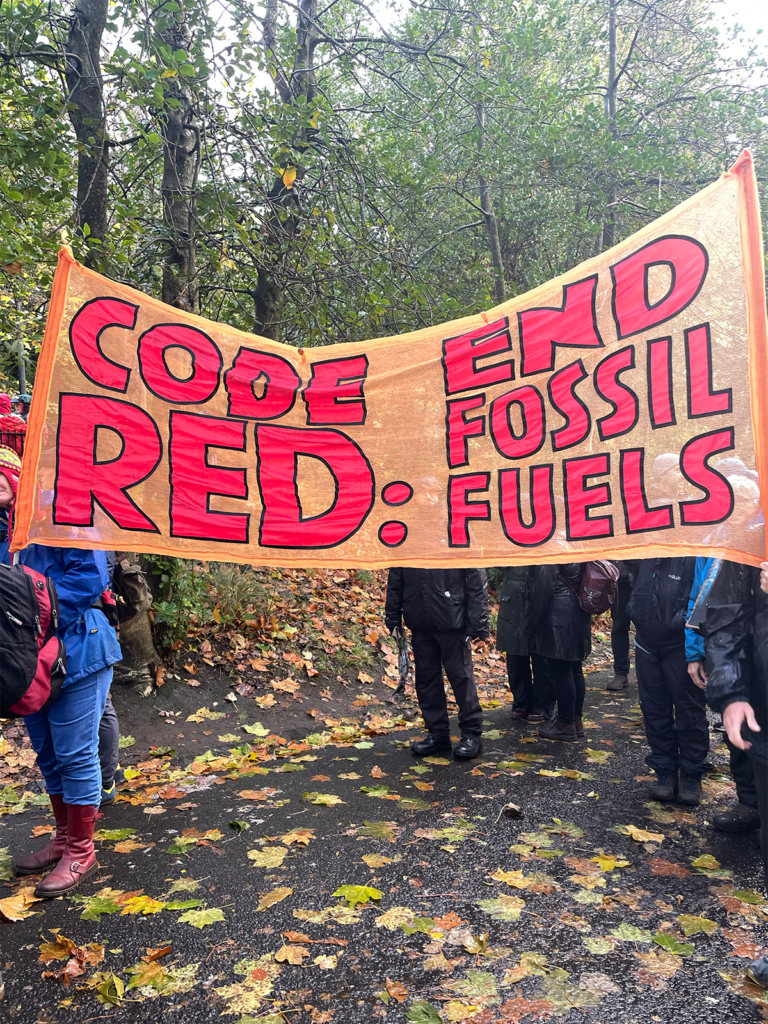
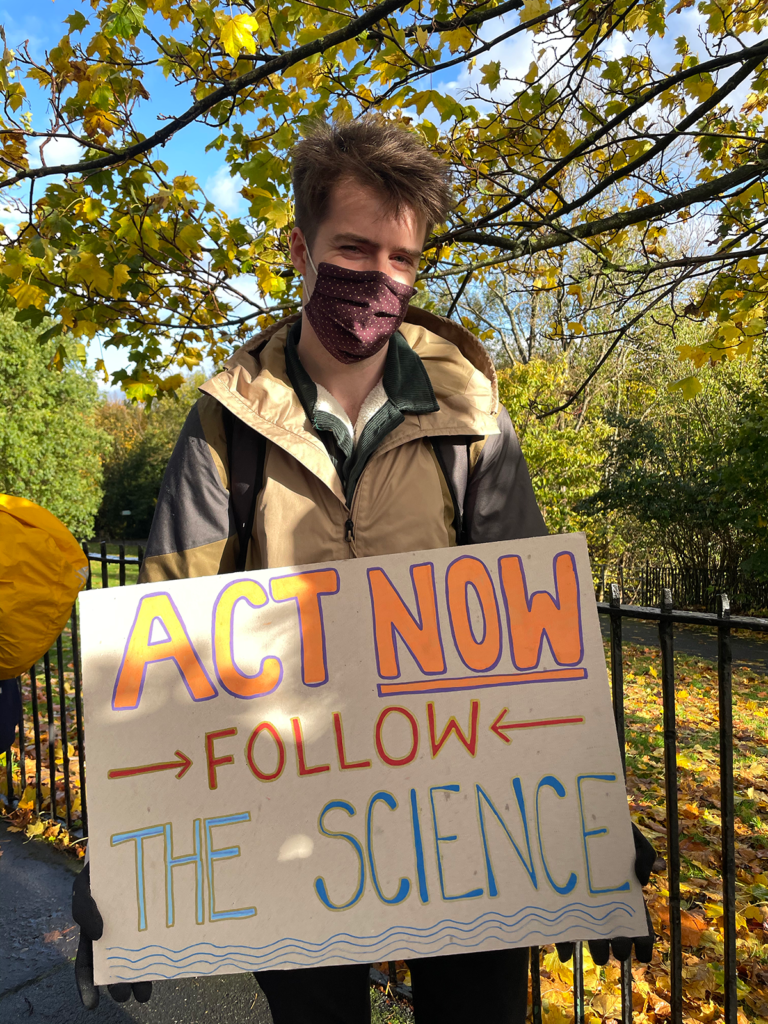
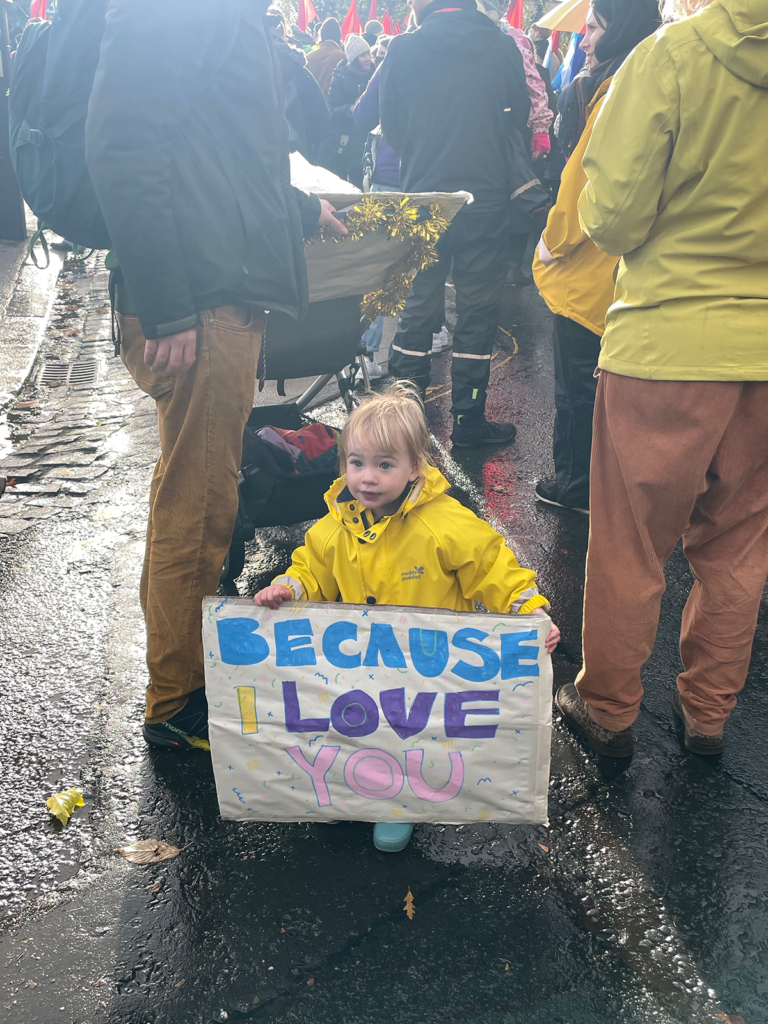
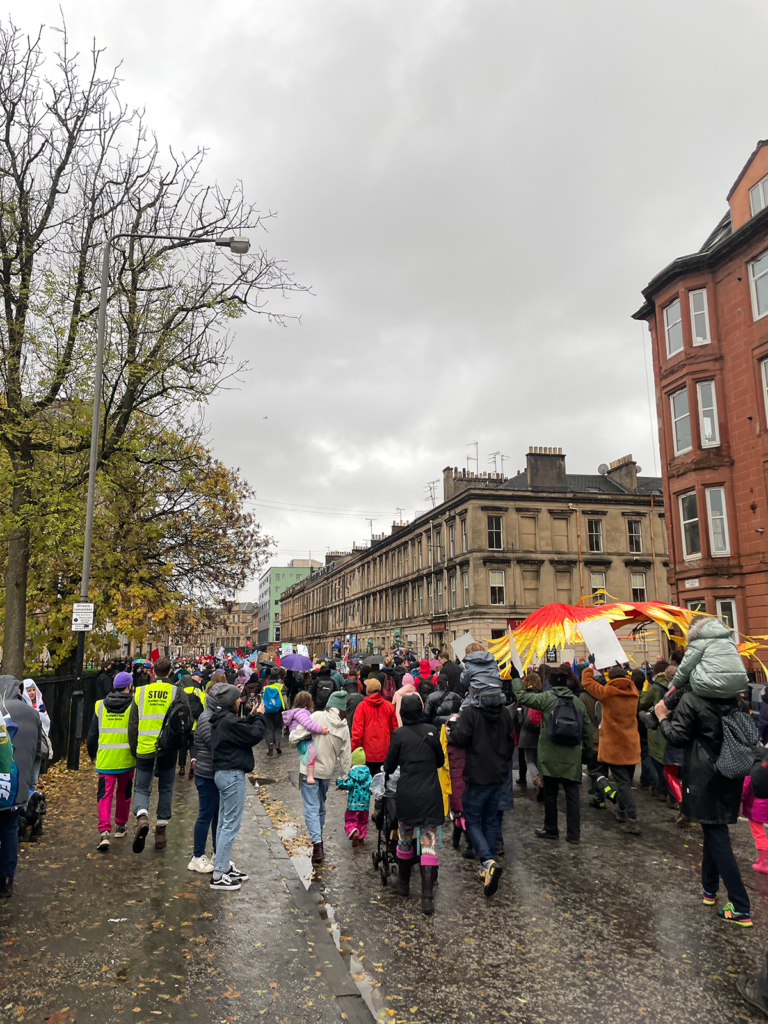
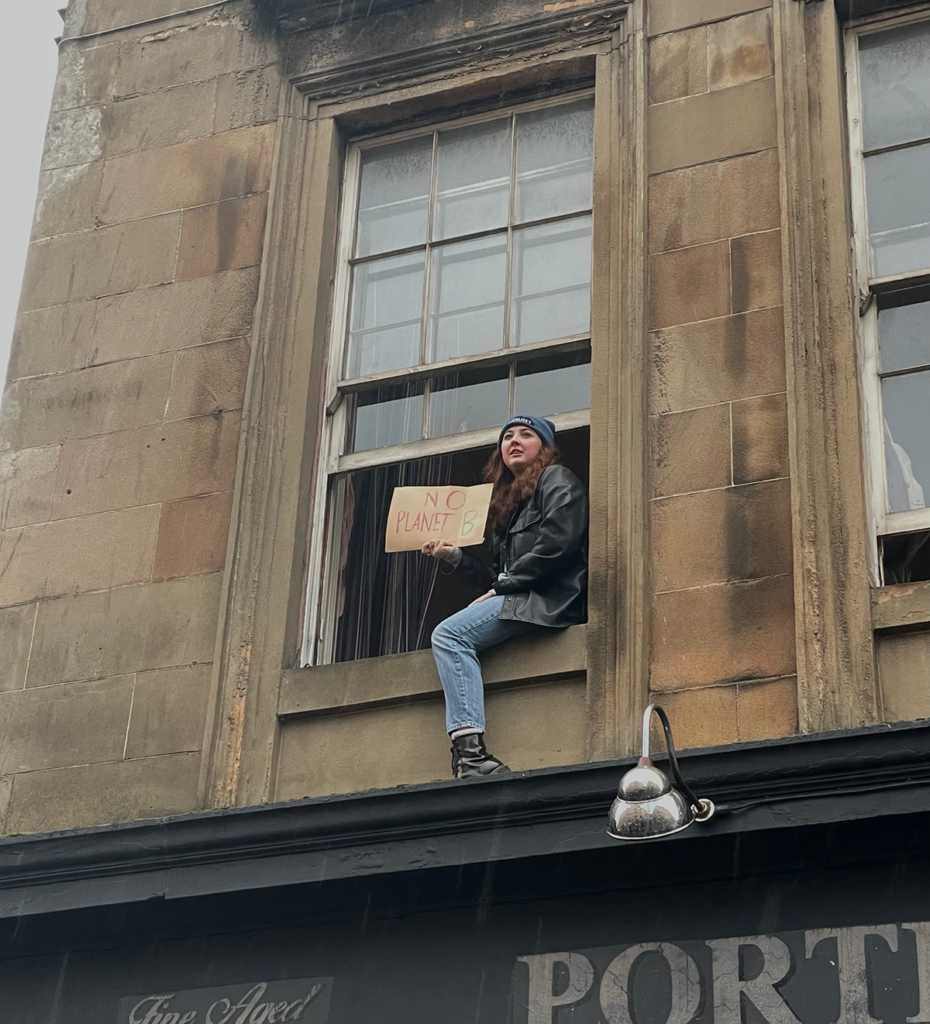
5 November – Day FIVE
Today, with much of the negotiations happening behind closed doors, we spent our time talking to some of the amazing activists around the world about their priorities for COP26 and how they think things are going.
No region has more at stake here or has done more to shape the world’s response to the climate crisis than the Pacific. It was determined advocacy from Pacific Island Countries that ensured the Paris Agreement included the goal of limiting warming to 1.5°C. Knowing that warming beyond this limit was very likely a matter of survival for their communities, Pacific leaders stared down some of the world’s most powerful countries and eventually convinced everyone that limiting warming to 1.5°C had to be the goal.
However, no level of warming is safe, and even with today’s warming of around 1.1°C, vulnerable communities are already facing permanent loss and damage from the impacts of climate change, in spite of best efforts to adapt and build resilience. At worst, communities are being forcibly displaced from their land and homes. Thankfully, the Pacific was also successful in ensuring that the Paris Agreement included a standalone article on addressing loss and damage from climate change.
Unfortunately, the years since Paris have seen very little progress on this element of the Agreement, particularly when it comes to securing financial support for addressing loss and damage. Here in Glasgow, the issue of loss and damage is one of the most prominent and contentious parts of the negotiations. Pacific Island Countries, and many other vulnerable countries around the world, will be fighting to ensure that in addition to far stronger commitments to moving beyond fossil fuels and driving down emissions, and far greater support to vulnerable communities with building resilience to the impacts of climate change, that they come away with Glasgow with the confidence that communities facing permanent loss and damage due to climate change will be better supported.
Today we were lucky to talk to Kavita Naidu, a Fijian international human rights lawyer and board member at Greenpeace, and Maina Talia, the Secretary of the Tuvalu Climate Action Network and a member of the Tuvaluan delegation here in Glasgow, to gain a deeper understanding of the climate crisis and COP26 from a Pacific perspective.
4 November – Day FOUR
Today’s energy-themed day got off to a positive start with last night’s commitment from a group of 190 countries and companies agreeing to end coal power.
We decided to head off in search of some positive energy ourselves, making the short trip over to Perth (in Scotland, not WA!) to meet with one of the key architects of Scotland’s own energy transition. Check out today’s video!
Back at the COP, technical negotiations are well underway across the many different elements that will make up the eventual COP decision. Things seemed oddly calm at the COP today, though you can expect things to be kicked up a notch again sooner or later as countries start having to work through some of their areas of disagreement. While so far we’ve been talking mostly about what decision countries will reach on further raising their targets when they leave Glasgow, there are many other items to be negotiated. Over the next couple of days, we’ll bring you some more detail on two of the other main ones for this COP: the rules for government international carbon markets, and addressing loss and damage from climate change.
AUSTRALIA’S COP PERFORMANCE SO FAR
It’s safe to say, Australia’s performance at COP26 so far has left us feeling pretty disappointed and at times, utterly embarrassed. Check out this graphic for a complete run down.
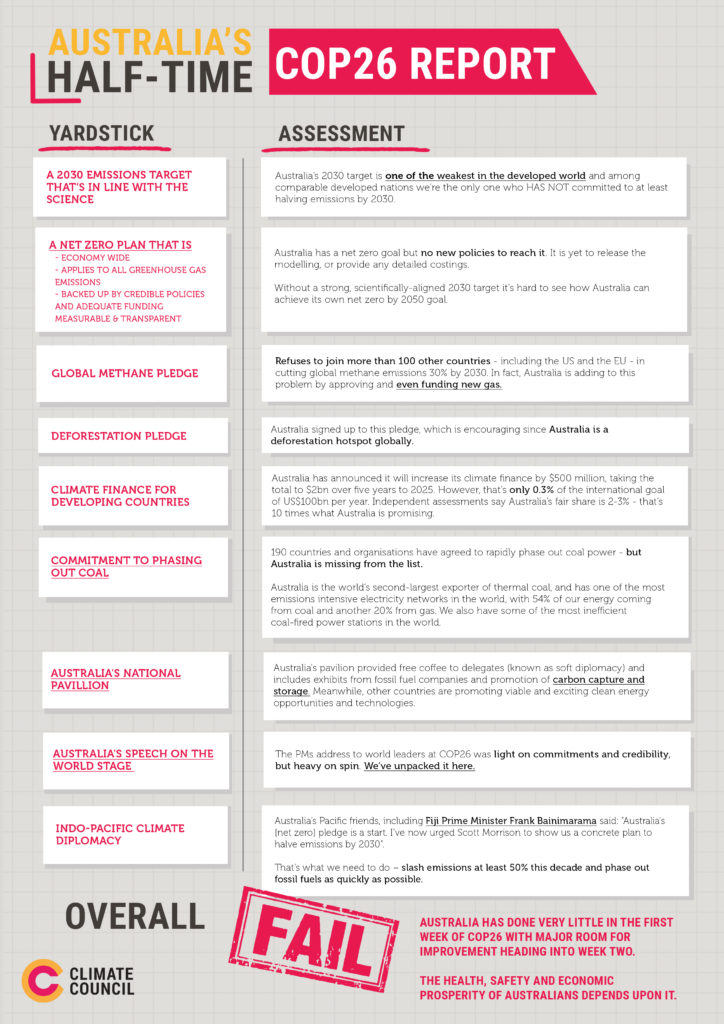
AND THE GOOD NEWS FROM COP26 SO FAR
Despite our own country’s poor performance, we can’t help but feel hopeful when looking at some of the great international initiatives that have been announced at COP26 already
🌳 110 countries have committed to ending deforestation by 2030. The countries who have signed the pledge – including Australia, Brazil, Russia, China, Indonesia, the US and the UK – cover around 85% of the world’s forest
🐄 COP26 also saw the launch of the Global Methane Pledge through which participating countries have pledged to reduce global methane emissions by 30% by 2030. Now, 70% of the global economy has signed the pledge, including the US, EU, UK, Canada, Japan, Saudi Arabia and New Zealand… But not Australi
⚡️ More than 190 countries and organisations have agreed to end coal power! The pact includes 23 countries that for the first time have promised to stop building new coal plants and eventually shift away from using coal altogether, including South Korea – the second biggest importer of Australia’s coal. And while the Australian Capital Territory has signed the pledge, Australia itself has not (…but are we surprised!?
☀️ When COP26 began, the world was on track for 2.7°C temperature rise by 2100. Now, new analyses find that if countries back in the pledges they’ve made at COP so far with adequate action, the amount of warming would drop to 1.9°C. While this still doesn’t meet the Paris agreement’s goal of 1.5°C, we’re on our way to closing that gap.
3 November – Day THREE
WHAT DOES THE PATH TO SUCCESS IN GLASGOW LOOK LIKE?
After another big day wrapped, today we got the first glimpse of what would ensure a successful outcome from COP26.
What we still need to know:
- How far countries have managed to close the ‘emissions gap’ through their new targets;
- What decisions will be made to further strengthen these targets over the coming years;
- And whether a series of deals made on the side, including for the phase-out of fossil fuels, will go ahead.
Today we received new analysis showing that if existing pledges were fully implemented, warming could be limited to 1.9°C (see more on that below). That’s progress, but not enough.
Yesterday we also gave an update on the High Ambition Coalition, a group of countries that will be looking to “keep 1.5°C alive” by ensuring that COP ends with a firm commitment to limiting warming to 1.5C and agreement to ratchet up existing commitments as soon as possible.
What will it take for all countries to agree to that? Here’s where climate finance – the theme for day 3 of the COP – becomes so critical in the negotiations.
Many of the world’s developing nations will only agree to stronger emissions reduction commitments if the wealthy nations – who have not only contributed the most to cumulative global greenhouse gas emissions but also accumulated considerable wealth off the back of burning fossil fuels – come true on their promises of adequate financial support to the rest of the world.
This begins with fulfilment of the longstanding promise to provide US$100bn a year by 2020. Today, Indonesia – the world’s eleventh biggest emitter – said it could phase out coal fired power plants by 2040 if it gets sufficient financial help from the financial community.
Even with this week’s modest increase in Australia’s contribution to international climate finance, we are still only providing around a tenth of our fair share towards that US$100bn goal. If we want to see the rest of the world move more quickly beyond coal, and if we want to do our part in “keeping 1.5C alive” then in addition to moving Australia beyond fossil fuels, our government needs to seriously step up its support for climate action beyond our shores.
As for those deals, at the very end of the day, UK Prime Minister Boris Johnson announced that 190 countries and organisations have agreed to rapidly phase out coal power at COP26 — but Australia is missing from the list.
The ‘Global Coal to Clean Power Transition Statement’ commits signatories to both phase out coal power and end support for new coal power stations. It already has the signatures of Vietnam – a mooted, major destination for Australian coal – and Poland – a country that ranks ninth in the world for coal consumption. Read more about that here.
WHAT ABOUT THAT EMISSIONS GAP?
There’s still a long way to go, but new analysis suggests pledges made in the lead-up and during COP26 will have a major impact on warming this century.
A new assessment shows that if countries’ existing 2030 targets and net zero commitments are fully implemented, warming this century would likely peak at 1.9°C. This is a substantial improvement from only a few weeks ago, where best estimates have the world on a trajectory for a catastrophic 2.7°C temperature rise. It is the first time that projected warming has been below 2°C.
The main reasons for this vastly improved outlook are the inclusion of new commitments from China and India, and the inclusion of the long-term emission reduction strategies put forward by 70+ countries.
This is a highly credible analysis prepared by an expert team including Malte Meinshausen, Associate Professor at the University of Melbourne and Lead Author of the IPCC’s recent Sixth Assessment of the physical science of climate change.
The analysis hinges on the assumption that pledges will be backed by the necessary policies and actions across energy and land use, and that funding is adequate to ensure their implementation.
While real progress, it is still a long way from what is necessary to “keep 1.5C alive”. That will require countries coming back with new and stronger commitments for this decade.
A successful outcome from Glasgow therefore depends on how far countries close the emissions gap by the end of the COP, and a COP decision that ensures commitments are ratcheted up quickly in the years that follow. A proposal for NDCs to be reviewed and strengthened every year until 2025 has been put forward by the Climate Vulnerable Forum and has growing support, including from the High Ambition Coalition.
2 November – Day TWO
Another big day in Glasgow! As negotiations continue and discussions develop, it’s becoming clear that success at COP26 will be defined by three things:
- The strength of new commitments that countries have brought to the table.
- The final ‘COP decisions’ – i.e. the negotiated outcome of the COP, including decisions on ratcheting up ambition over the coming years.
- A series of important deals that are being made alongside the formal negotiations. These include the breakthrough agreement by more than 100 countries to halt and reverse deforestation by 2030 – arguably the most encouraging development of the conference so far – and the Global Methane Pledge.
Insane in the methane
Today saw the formal launch of the Global Methane Pledge, through which participating countries have pledged to reduce global methane emissions by 30% by 2030. Methane emissions are responsible for around a third of the global warming we’ve already experienced.
Limiting methane emissions is one of the most important things we can do right now to slow the rate of warming over the coming decades. More than 100 countries representing 70% of the global economy have now signed the pledge. The list includes the US, EU, UK, Canada, Japan, Saudi Arabia and New Zealand. But not Australia.
Spruiking false solutions to world
Today, delegates wandering through the pavilion area of the COP – where countries get to showcase their climate actions – were confronted by an interesting juxtaposition. Right next to the pavilion for the Global Methane Pledge, where leaders were launching this landmark new commitment, can be found the Australian Pavilion, dominated by a model of a carbon capture and storage (CCS) facility bearing the logo of gas giant Santos.
Despite billions in investment and decades of research and development, CCS has consistently failed to live up to its promises. It is widely regarded as a licence to keep polluting and an effort to prop up the fossil fuel industry. But nowhere on earth has it been shown to be possible at anything like the scale that would be required to offset emissions from the continued burning of fossil fuels.
The Australian Government’s actions so far at this COP have further cemented its reputation as one of the world’s worst climate offenders. While others including the UK hosts are working to ensure that COP26 accelerates the world’s transition beyond fossil fuels, Australia remains intent on prolonging the life of the fossil fuel industry.
The ‘Glasgow pact’
As world leaders leave Glasgow, the COP will move into a phase of more detailed and technical negotiations. These will span all the elements of the Paris Agreement, including;
- Mobilising finance for climate solutions
- Adapting to climate change
- How to address permanent loss and damage from climate change
- The operation of international carbon markets
- …and many other areas
Towards the end of the two weeks, these negotiations will converge into a series of final decisions, with plenty of horse trading between one area and another in order to reach an overall outcome that is acceptable to all countries.
One of the most important parts of the final decision will be how quickly and regularly countries will agree to further strengthen their 2030 targets, in order to keep alive the goal of limiting warming to 1.5°C.
HAC is back
Six years ago, the High Ambition Coalition (HAC) – an informal alliance of nations led by the Marshall Islands – became pivotal to landing the Paris Agreement. The HAC assembled a critical mass of countries in support of limiting warming to 1.5°C, along with other key elements of the eventual Agreement including a five-yearly review and strengthening of countries’ contributions.
Could the High Ambition Coalition be key to success in Glasgow, specifically to landing an agreement to rapidly ratchet up ambition post-Glasgow to “keep 1.5°C alive”? There are clear signs that a similar diplomatic effort is now well underway behind the scenes.
Importantly, the US has rejoined the High Ambition Coalition. Notably, the US Special Presidential Envoy for Climate John Kerry was sat alongside representatives of the Marshall Islands and Denmark today while announcing US support for a new declaration on net zero emissions shipping. The Marshall Islands, along with Grenada, is co-chair of the High Ambition Coalition. Denmark had been tasked by the UK to work with Grenada on a draft decision on further strengthening the ambition of 2030 targets.
It may just be speculation at this stage, but seeing these countries working together strongly suggests a similar strategy to what we saw in Paris is unfolding. While that COP saw Australia eventually join the HAC, given that Australia stubbornly resisted calls to strengthen its 2030 targets ahead of COP and instead has been doubling down on fossil fuels, it seems highly doubtful this time around that Australia would be accepted into the club.
1 November – Day ONE
Phew! Day two of COP26 was a biggie. Country leaders began making their addresses to the conference, Sir David Attenborough gave a powerful speech as the ‘People’s Advocate’ to the summit, and Australia was awarded one of the ‘Fossils of the Day’! Here’s a quick wrap up of some of the biggest moments from the day.
Prime Minister Scott Morrison addressed COP26
Overnight in Australia, Prime Minister Scott Morrison addressed world leaders at the COP26 summit with a speech that was light on commitments and credibility, but heavy on spin.
We’ve pulled apart his speech and debunked a few of his misleading claims in this explainer article. Check it out!
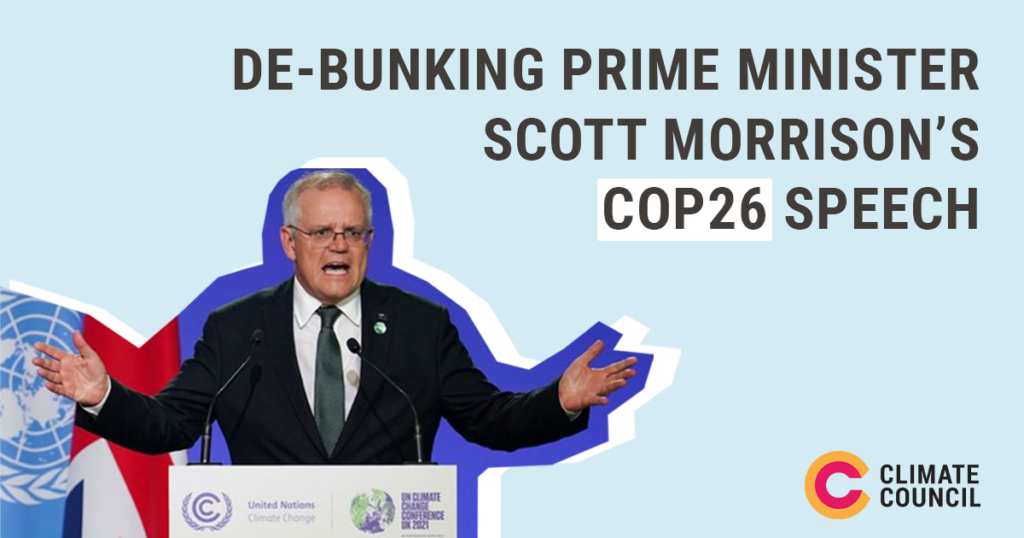
Australia was awarded runner up “Fossil of the Day” by the Climate Action Network
The ‘Fossil of the Day’ award highlights those countries that are “doing the most to achieve the least” in progress on climate change. Australia is one of the first countries to be named “Fossil of the Day” at this year’s conference in recognition of our failure to deliver ambitious climate commitments under the Paris Agreement, as well as for the approval of 3 new coal mines in the months leading up to COP26.
Sir David Attenborough gave a powerful speech
Sir David Attenborough addressed world leaders and delegates with a strong message both of urgent action and determined hope. The speech set the stage for the gravity of the decisions that will be made at COP26, and highlighted that the impacts of those decisions will be felt by generations to come.
“The people alive now [and] the generation to come will look at this conference and consider one thing: did that number [atmospheric CO2 concentration] stop rising and start to drop as a result of commitments made here? There’s every reason to believe that the answer can be yes.”
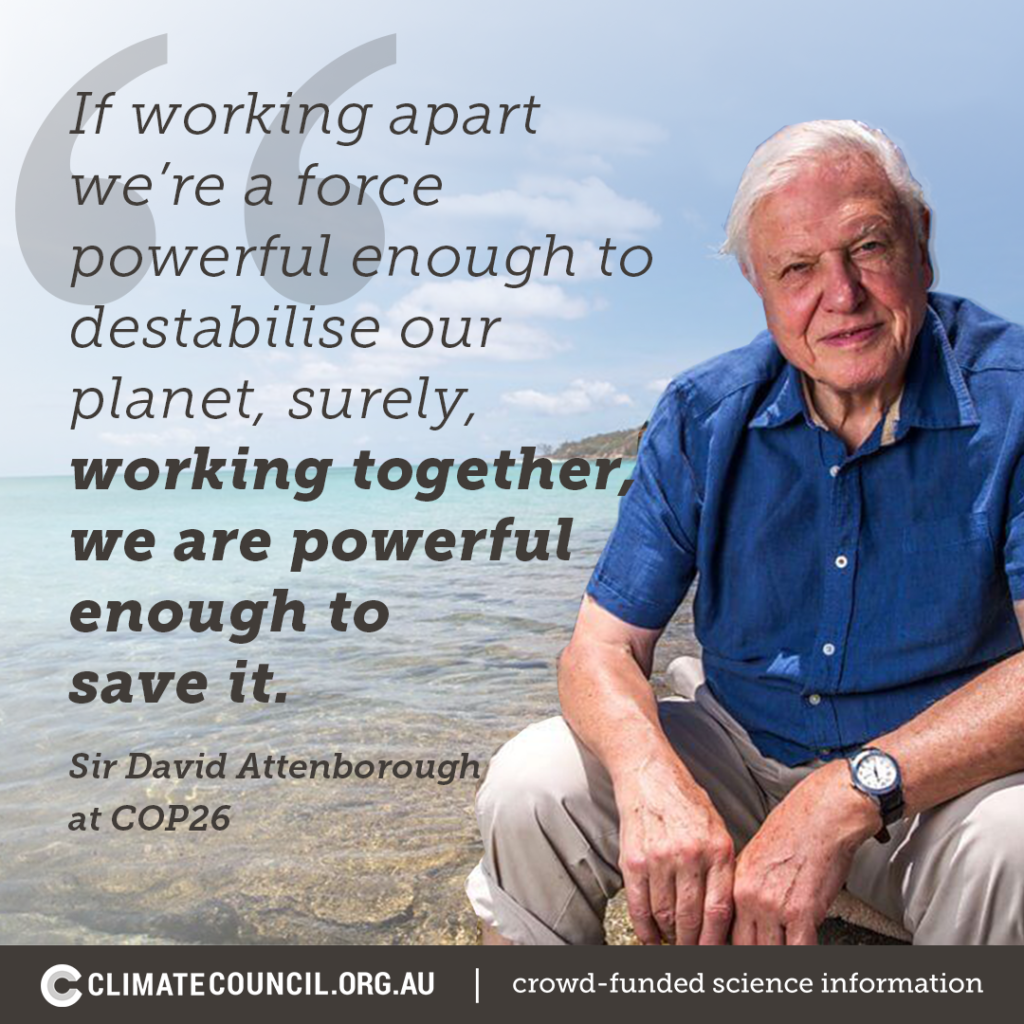
Dr Simon Bradshaw on the Project
Dr Simon Bradshaw joined Waleed Aly on Channel 10’s The Project to unpack Australia’s appalling history of climate inaction, and how that led us to where we are today – dead last on climate action out of all developed nations. You can watch the segment here to help you cut through the spin around Australia’s climate policy history.
Some photos from day 2 of COP26!

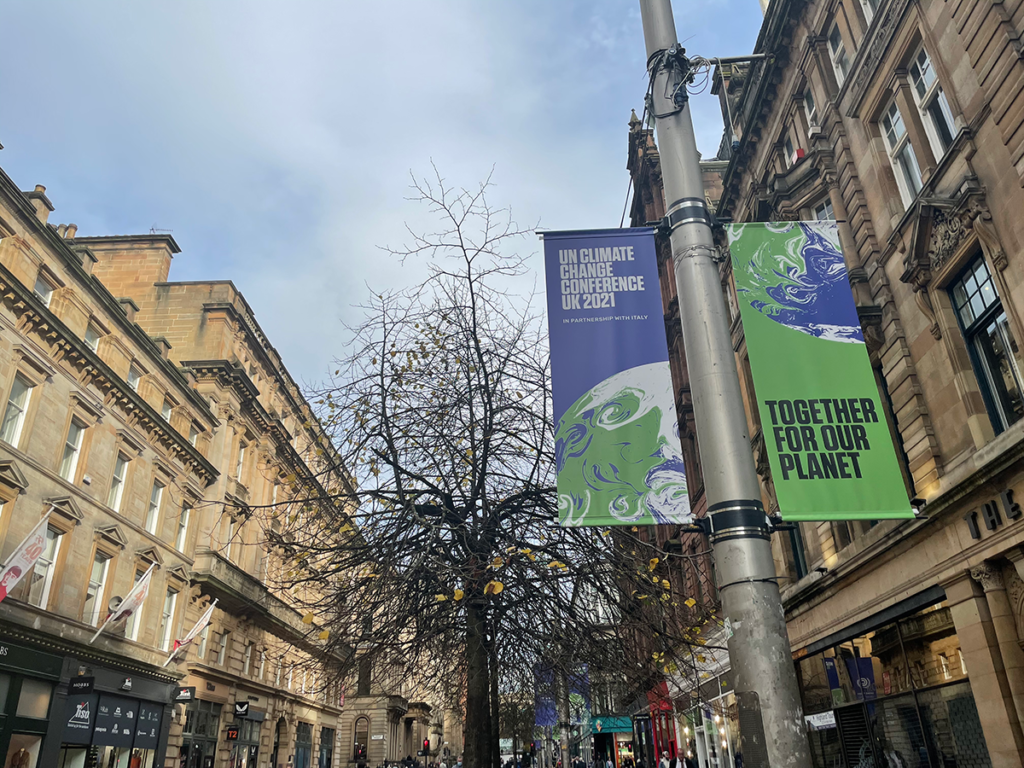
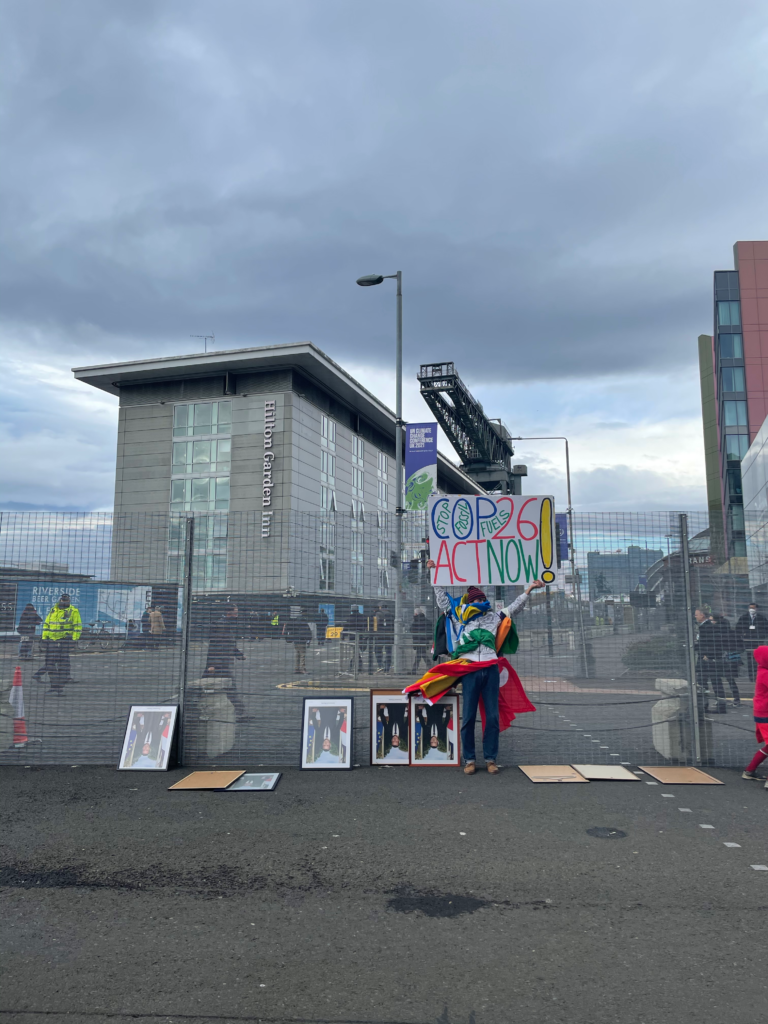
31 October – Formal Opening of COP26!
BY DR SIMON BRADSHAW – DIRECTOR OF RESEARCH (PROJECTS)
Today was the formal opening of the COP. With many world leaders arriving tonight, ahead of the two-day World Leaders Summit, it felt like the calm before the storm. In the main plenary, officials worked through all the various procedural steps to get things formally underway. Meanwhile, delegates roamed around trying to get themselves oriented and meeting to strategize for the coming days.
Outcome of the G20 Summit
While weaker than an earlier draft, which included a commitment to the phase-out of coal-fired power in developed countries by 2030, the final G20 communique identifies limiting warming to 1.5°C a common goal of G20 nations, and recognises the significant contribution of methane emissions to climate change. “Keeping 1.5°C alive” will require countries to further ratchet up their 2030 targets after Glasgow. Australia resisted the inclusion of a commitment to phase-out coal and for greater efforts to cut methane emissions. Classic Australia!
New Zealand comes to the party, leaving Australia even more isolated
On the eve of COP26, New Zealand became the latest country to commit to halving its emissions by 2030. With the US, EU, Canada, Japan, South Korea, and now New Zealand having substantially strengthened their 2030 commitments, Australia now finds itself as the only one among comparable countries showing up in Glasgow without a new and stronger target for this decade.
As governments and international media descend on Glasgow, Australian NGOs are working to ensure they understand the reality of Australia’s climate (in)action
The Australia Institute took out a full-page advertisement in Scotland’s Sunday Post with the words “Don’t let Australia wreck Glasgow”, highlighting Australia’s continued approval of new coal and gas developments, and the fact that emissions from Australia’s production and burning of fossil fuels are still going up, not down.
World Meteorological Organisation’s State of the Global Climate Report lays down the latest science as COP26 gets underway
In one of the most important scientific inputs to the COP26 negotiations, the World Meteorological Association has shown that the last seven years have been the hottest on record and that sea level rise is accelerating. The report also documents the extraordinary run of extreme weather events around the world in the year leading up to COP26.
Quote of the day
COP26 President Alok Sharma and UNFCCC Executive Secretary Patricia Espinoza open proceedings:
“We know that this COP, COP26, is our last best hope to keep 1.5 in reach. And I know that we have an unprecedented negotiations agenda ahead of us. But I believe this international system can deliver. It must deliver…. Together, we can seize the enormous opportunities for green growth, for good green jobs, for cheaper, cleaner power. But we need to hit the ground running to develop the solutions that we need. And that work, my friends, starts today. And we will succeed. Or fail. As one.”
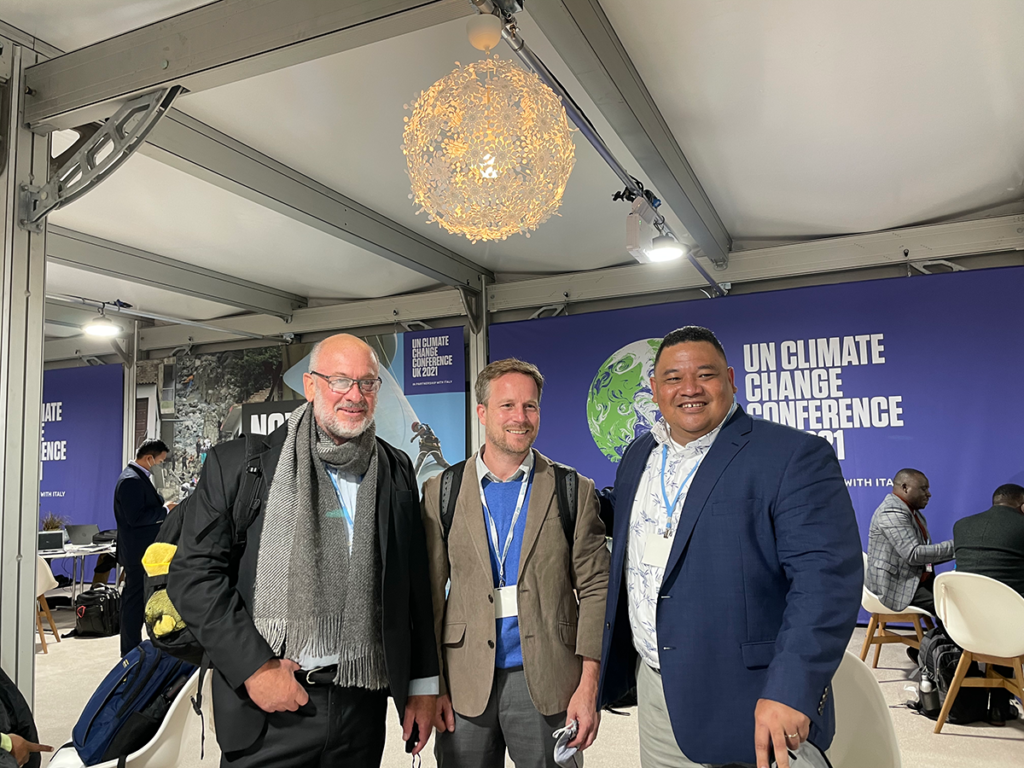
Professor Tim Flannery and Dr Simon Bradshaw with Maina Talia
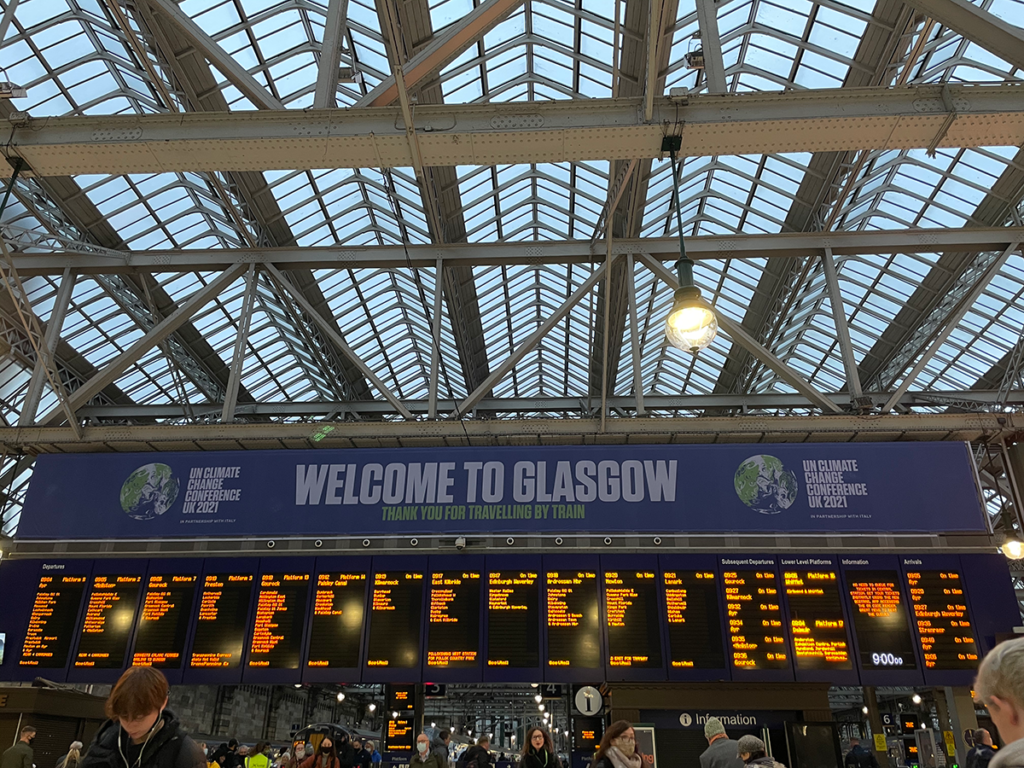
29 October – On Our Way!
BY DR SIMON BRADSHAW – DIRECTOR OF RESEARCH (PROJECTS)
Step up, Don’t #COPOut on climate
After months of planning, and many moments when we thought we’d never make it, our team is on its way to Glasgow!
We can’t wait to hit the ground, show you around, begin introducing you to some amazing people from around the world, and start keeping track on what the Australian Government is up to over here.
In the meantime, given they plan to show up with no real plan or commitment to climate action, you might be wondering what our government actually hopes to achieve by showing up in Glasgow? The short answer, as one of our Australian friends put it well, is “to get away with it”. That’s right, through the miracle of marketing, to get away with a plan to double down on fossil fuels and evade all responsibility for tackling the climate crisis.
Which means we’re going to have to do everything in our power to make sure they don’t!
Let me explain. The Australian Government knows the rest of the world is mightily unimpressed with both its track record and woeful lack of new commitments. Afterall, have you seen some of the global press it’s been getting recently? Of course, the sensible response to that would be to step up with a real contribution to tackling the global climate crisis. Instead, it looks like we’re about to watch our government try desperately to spin its way out of trouble.
Having wavered on whether to even come, Prime Minister Scott Morrison is jetting in on Monday for the world leaders’ summit. There’ll be a shiny pavilion set up to showcase Australia’s (in)action throughout the conference. And our government will be pulling every trick in the book to convince the world that the ‘Australian way’ to cutting emissions has real substance to it.
Unfortunately, the facts speak for themselves. Australia remains the worst performing of all developed countries when it comes to reducing emissions and moving beyond fossil fuels. It is already proving a drag on progress at this COP before things are even fully underway, having shown up with no commitment to accelerating action this decade, and refusing to sign the Global Methane Pledge. Not to mention the multiple new coal projects that it approved in the lead-up to COP.
No doubt our government expects to cop a bit of a bruising over the next two weeks, but will ultimately be hoping to get home relatively unscathed and able to carry its woefully inadequate commitments through to next year.
We can’t let that happen. And together, we won’t let that happen. Join us over the next two weeks as we work to hold our government accountable, help showcase what real action on climate change looks like, and show that Australians – and the world – are determined to ensure we become part of the solution.
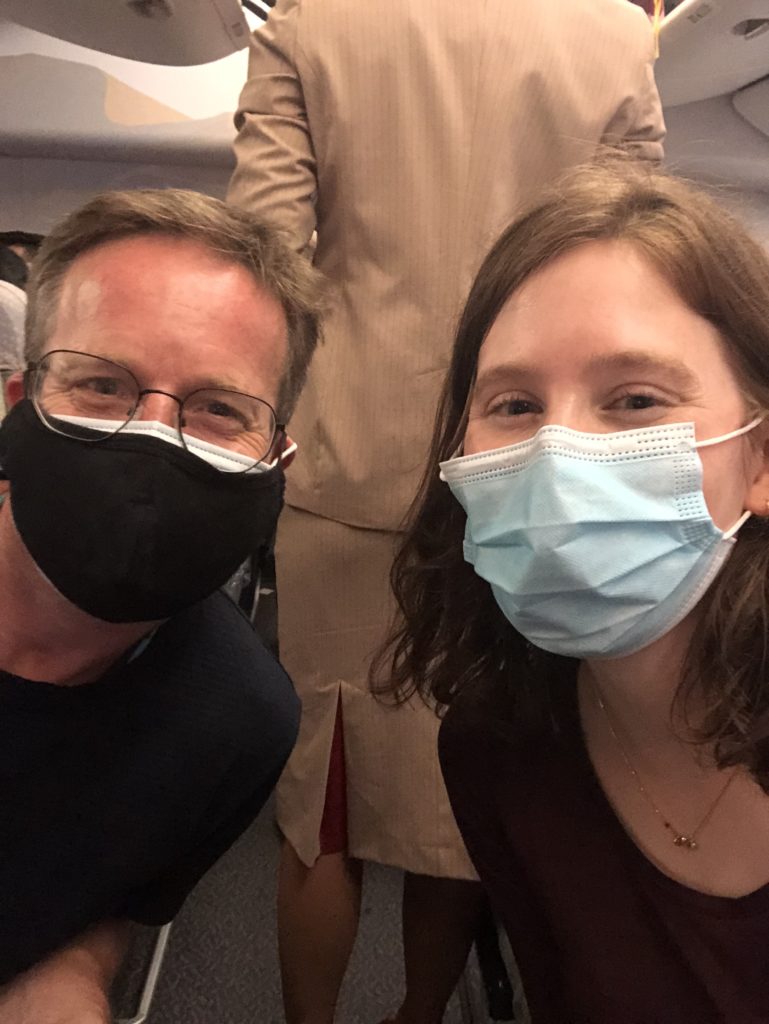
Two-thirds of the Climate Council team who’ll be on the ground in Glasgow at COP26!
Dr Simon Bradshaw and Alex Soderlund.
COP26: Background information
Before COP26 kicks off on the 31st of October, get up to speed on everything you need to know about this critical international climate conference using the resources below:
> What is COP26 and why is it so important?
> Don’t let the Australian Government #COPOut on climate | COP26 Mythbust
> Summaries with Simon: COP26
> International Action Scorecards
How do Australia and its key allies and trading partners compare on climate action? Spoiler: we’re lagging behind.
